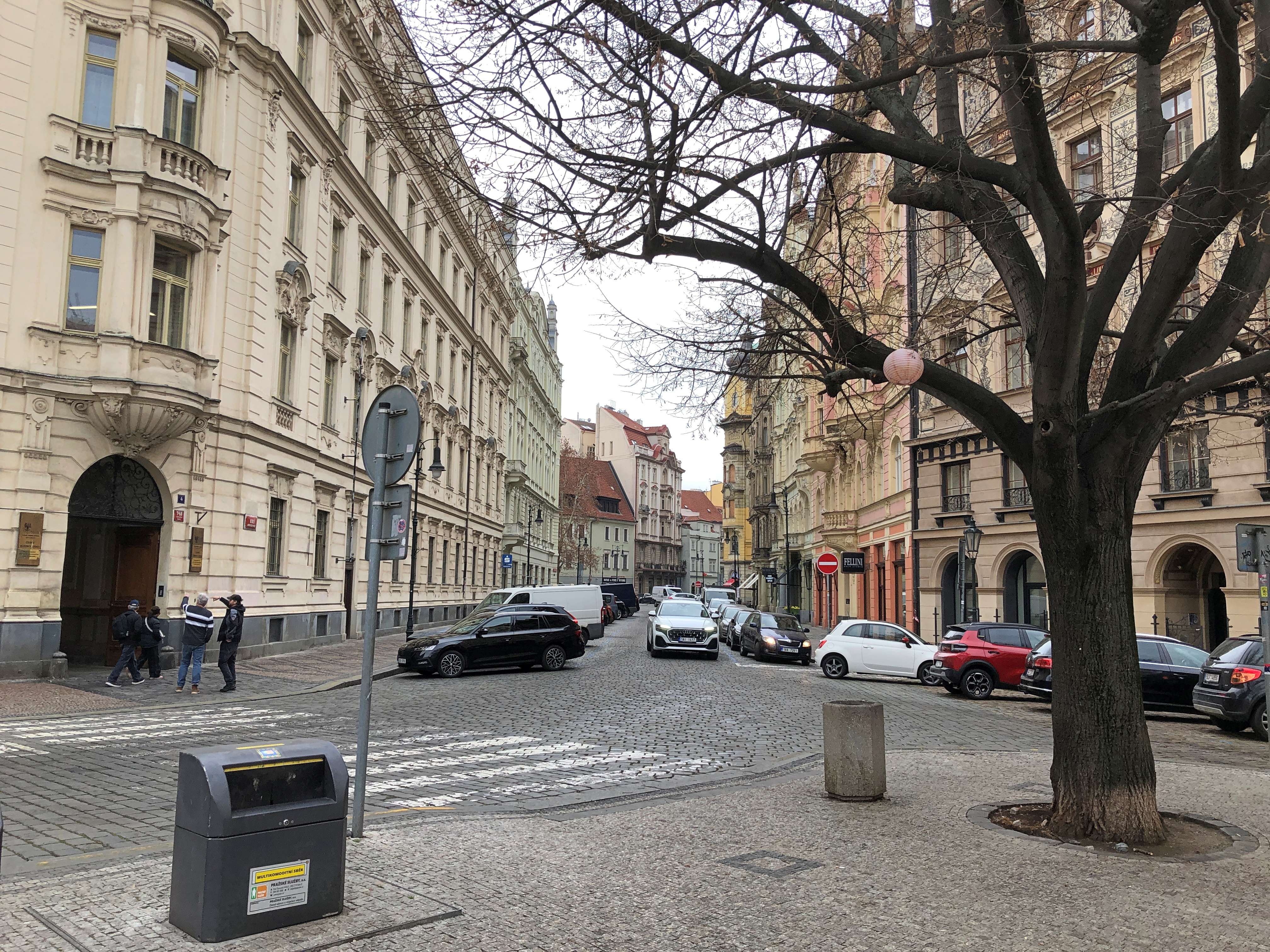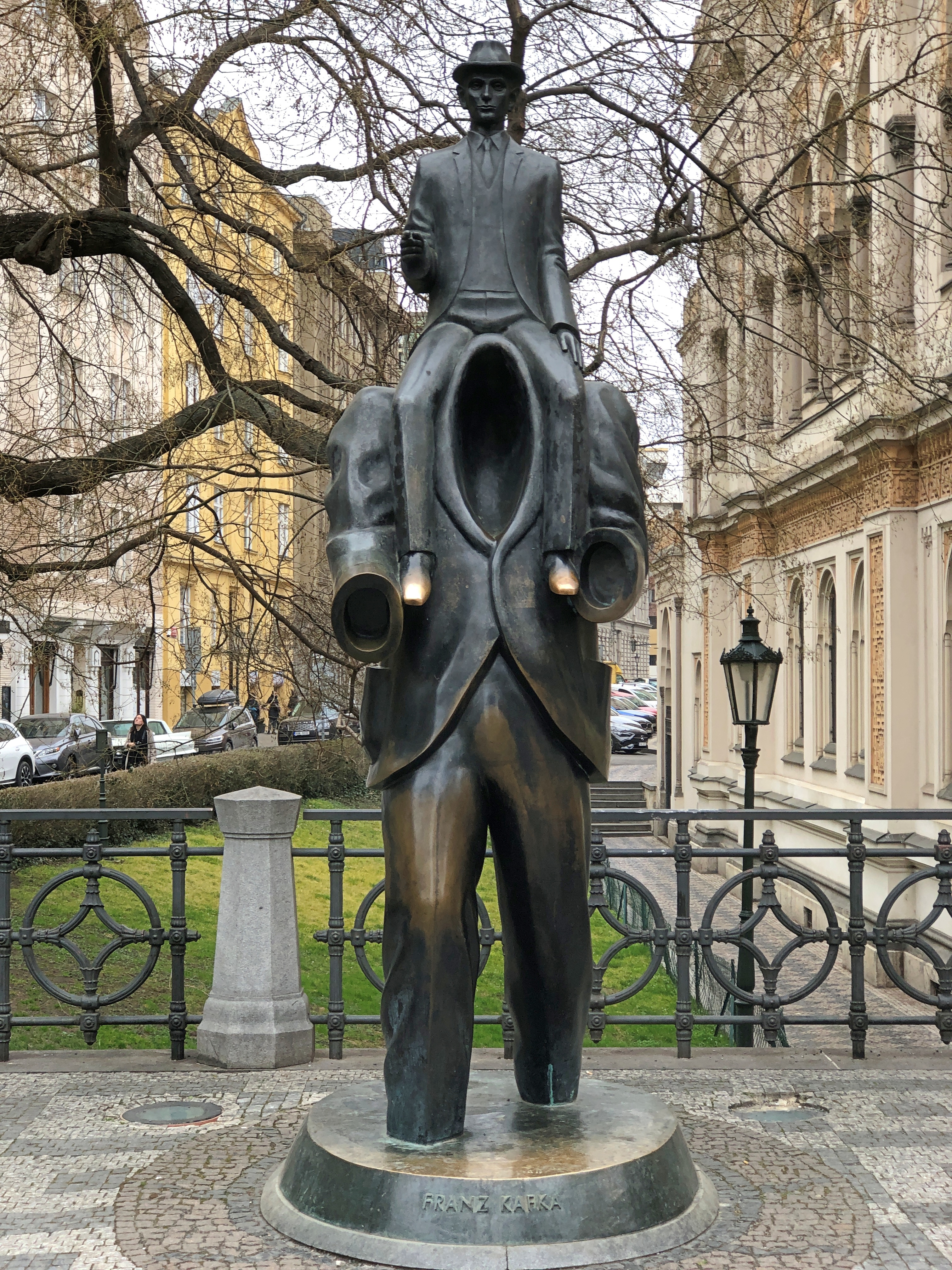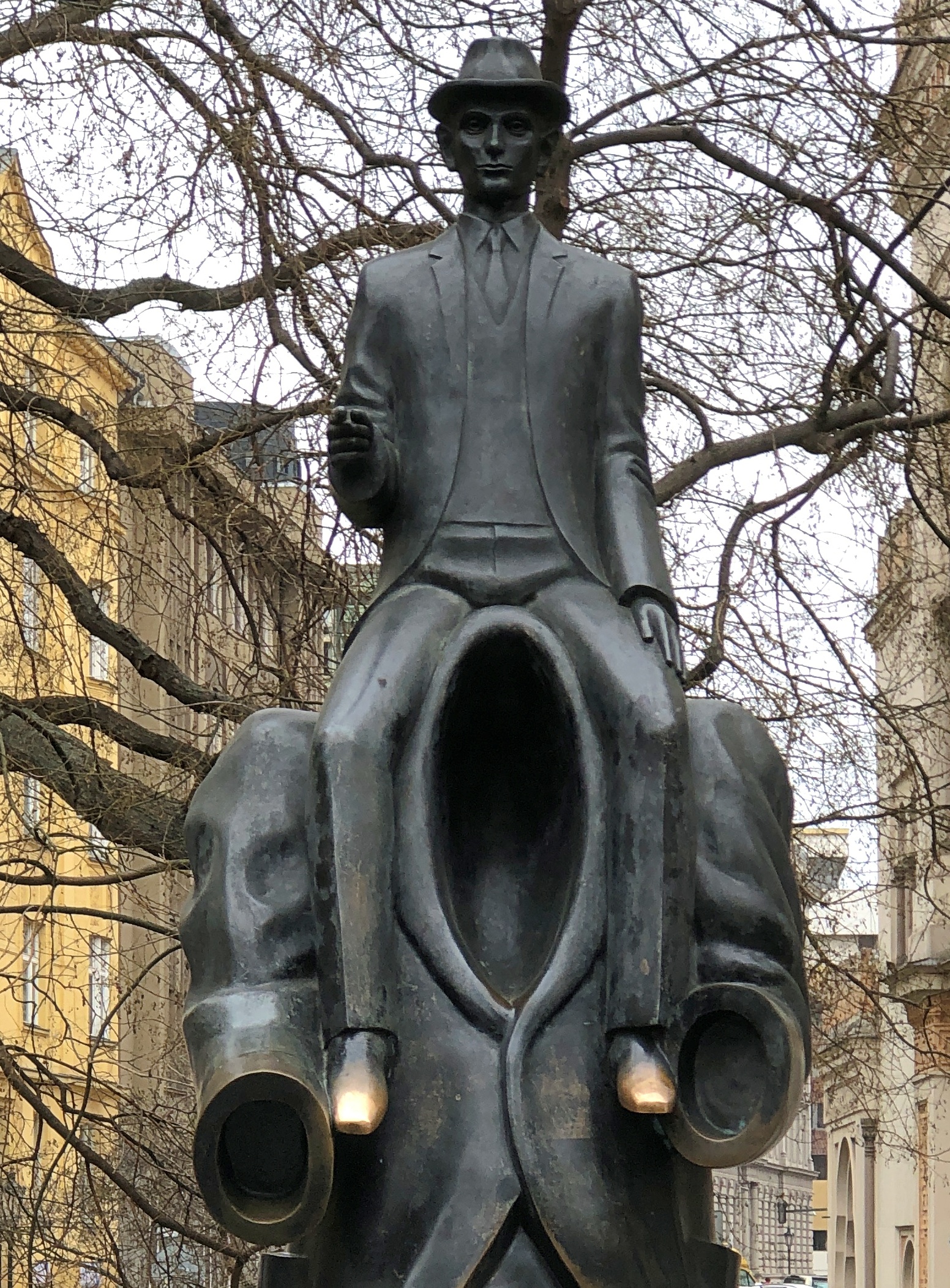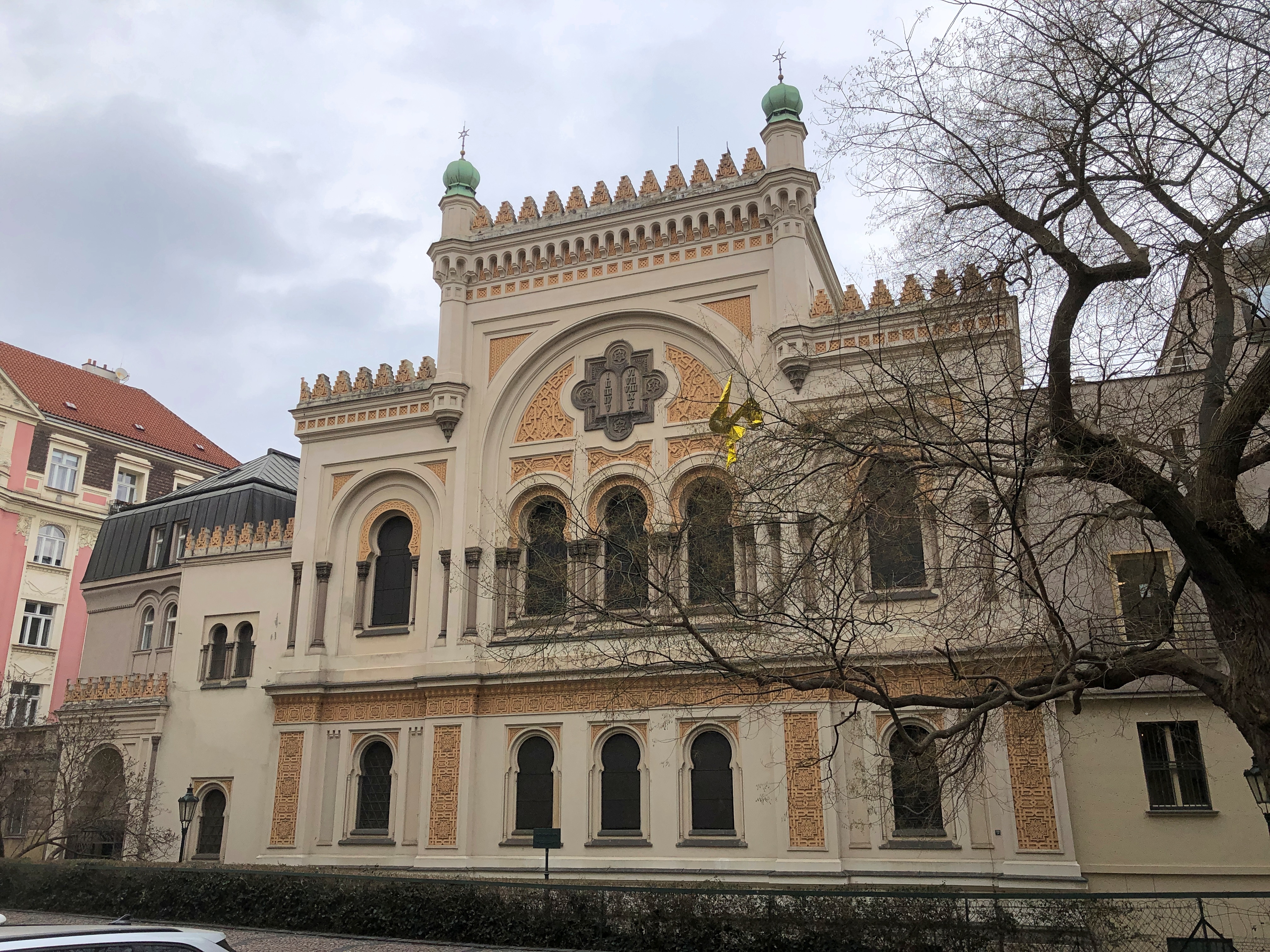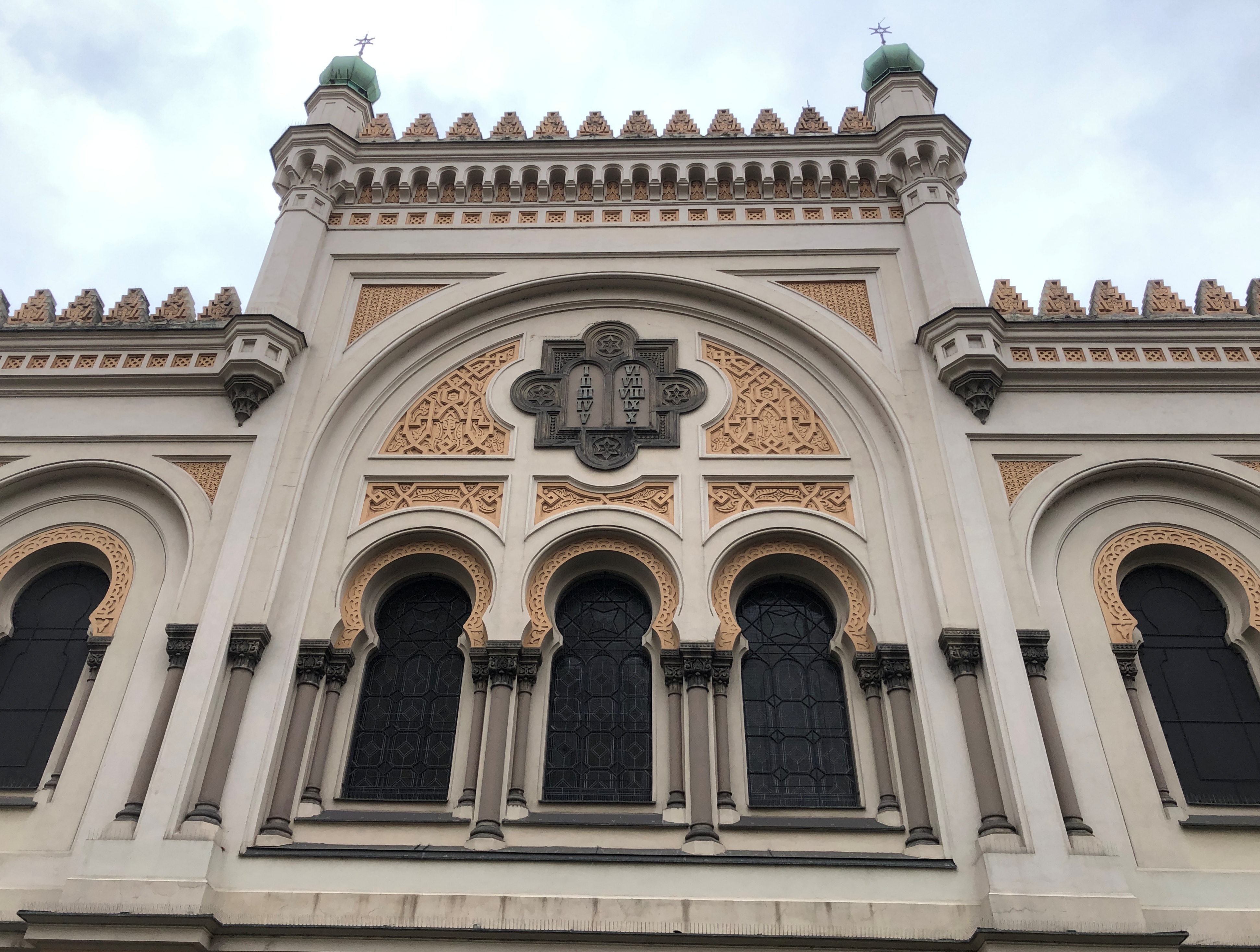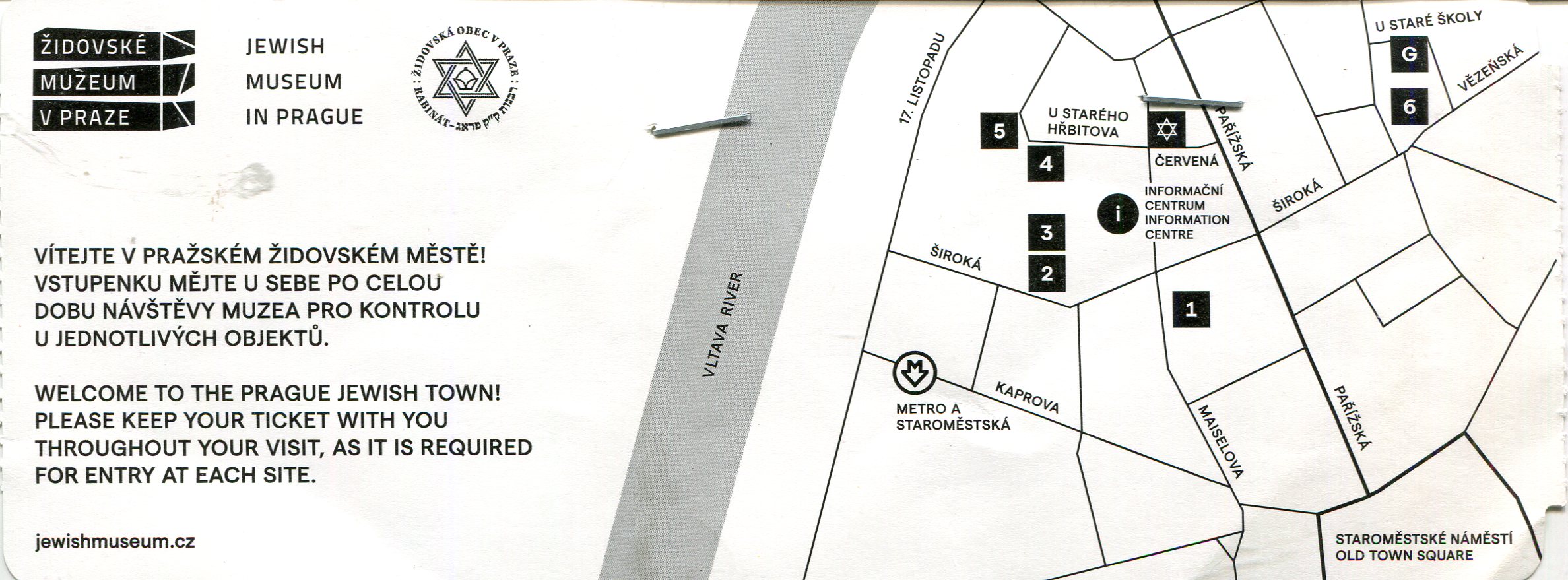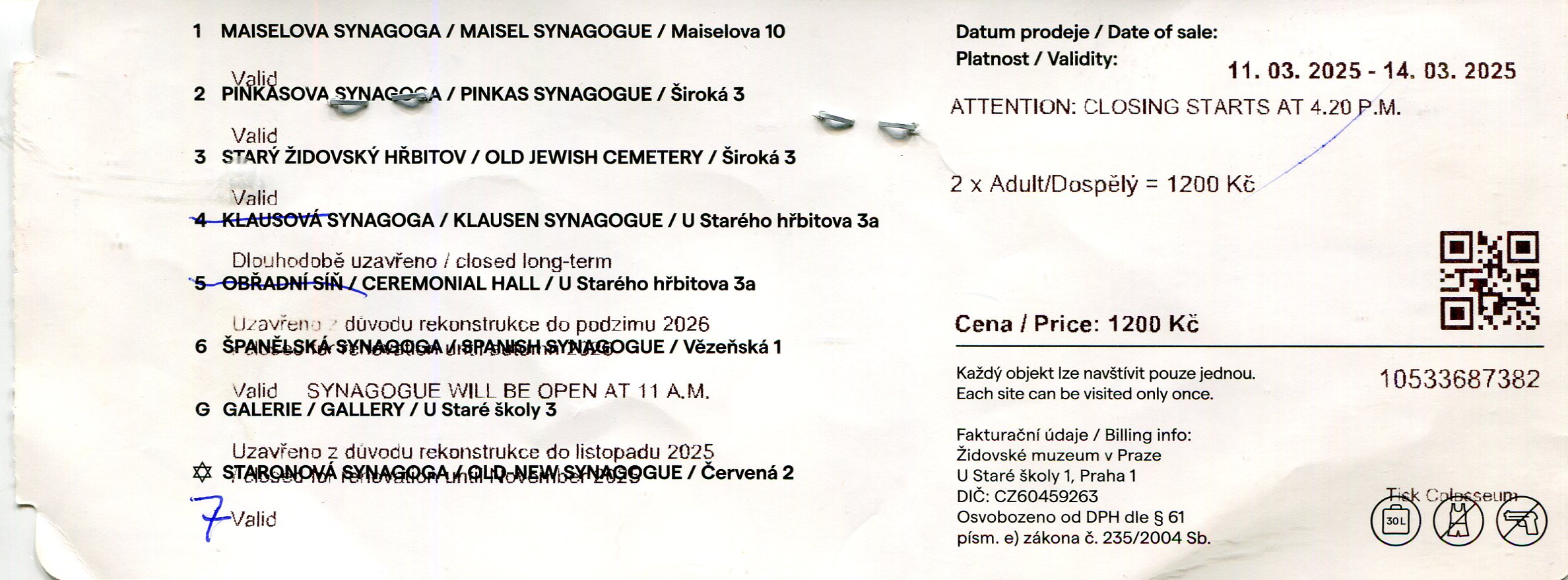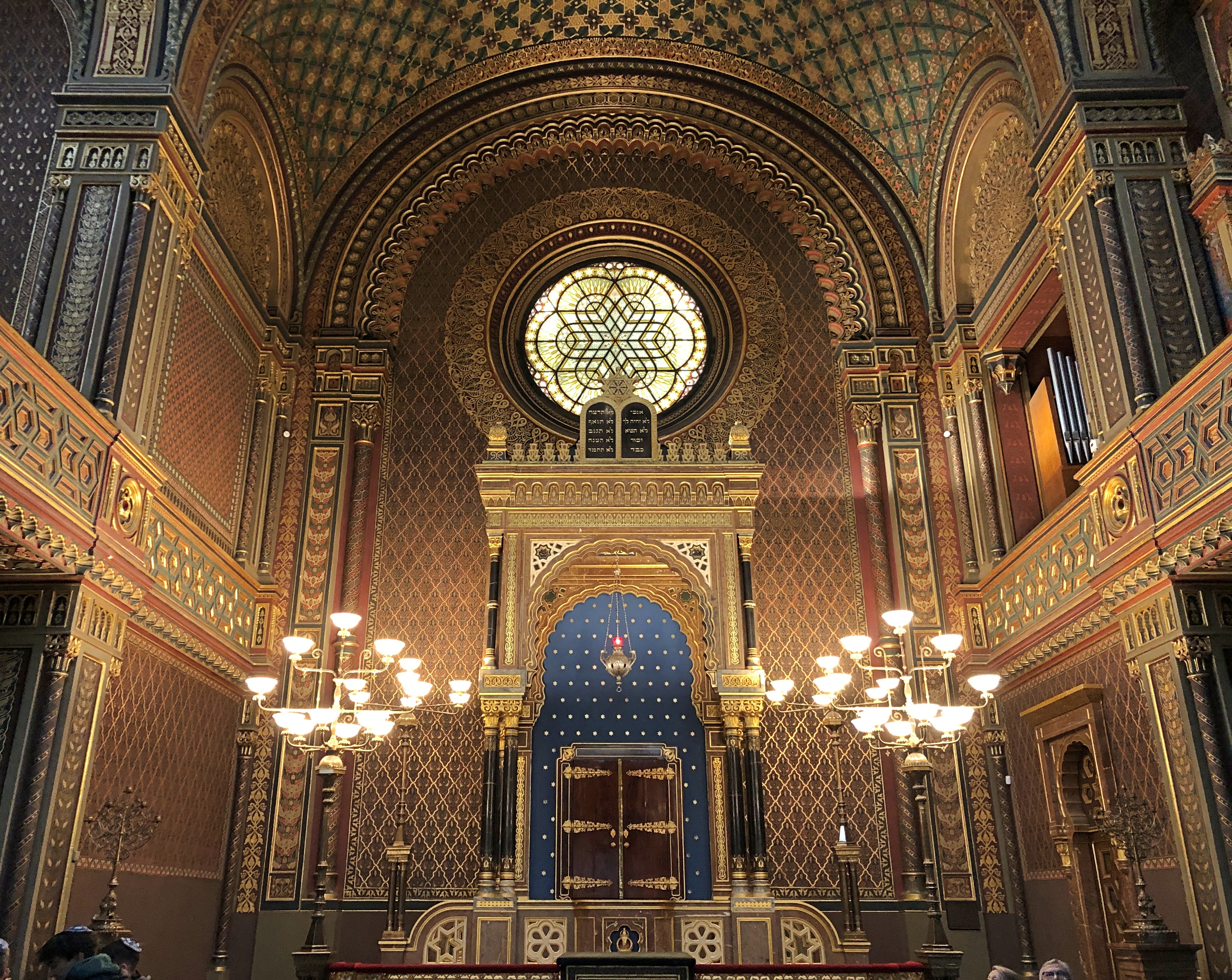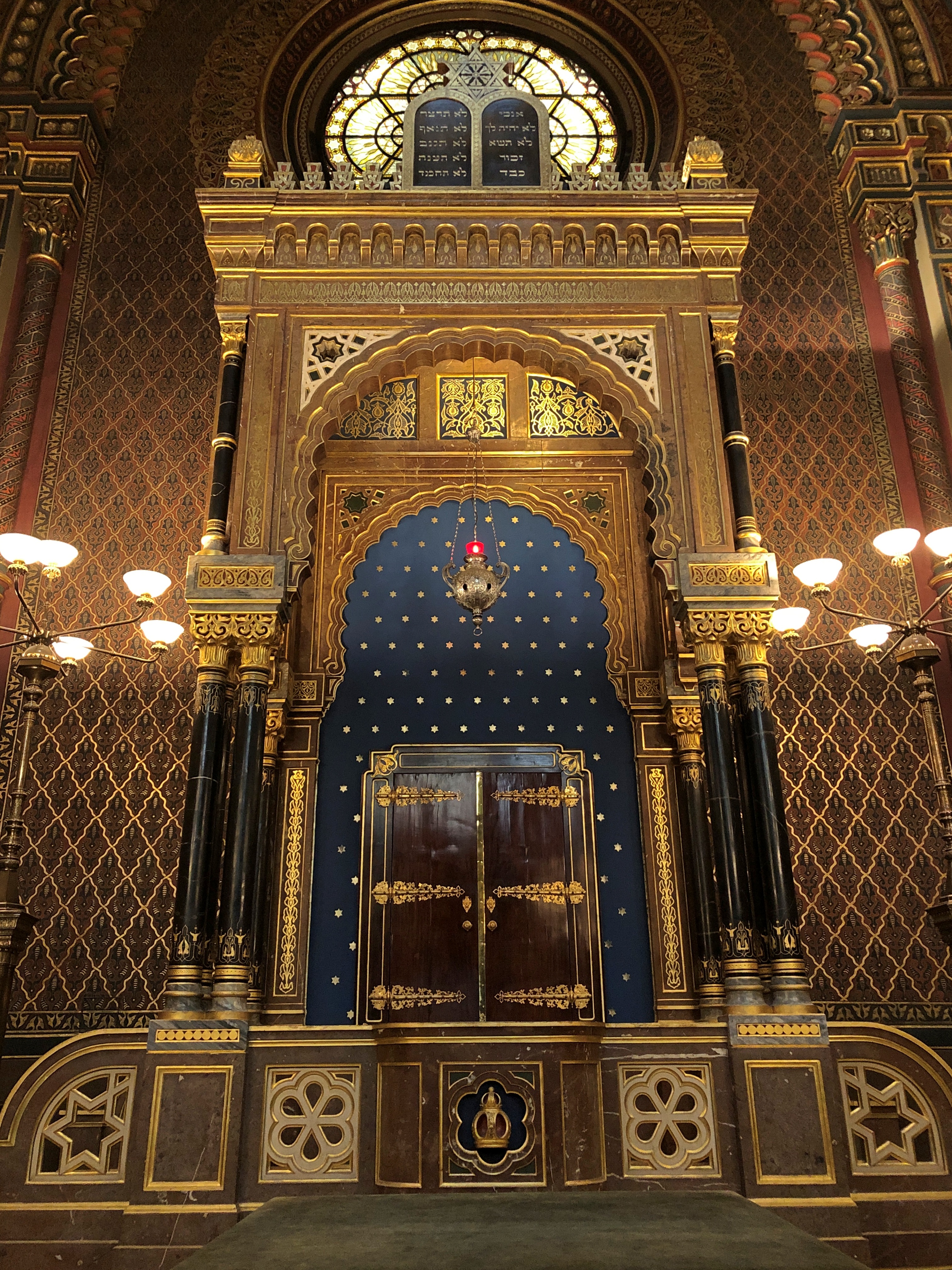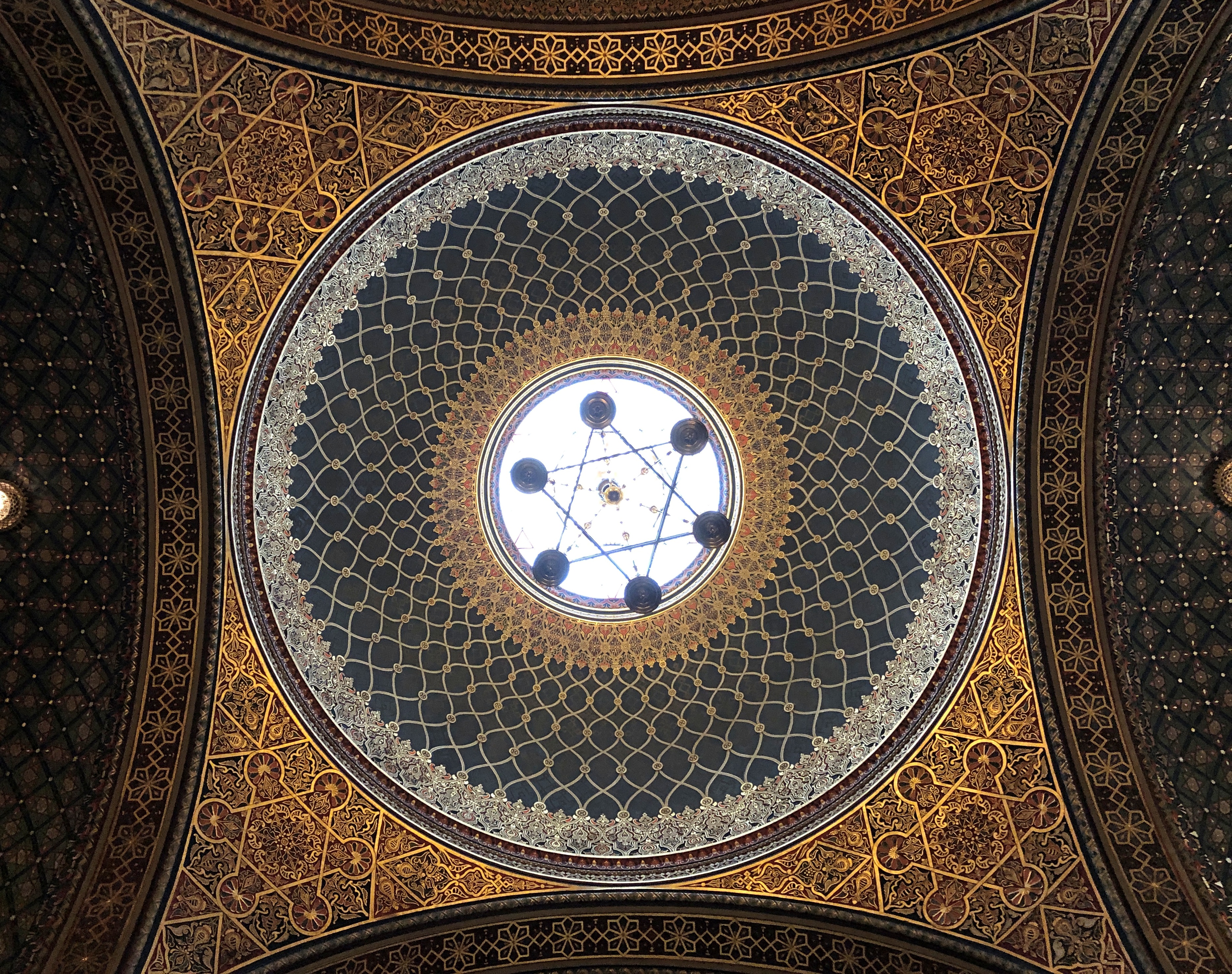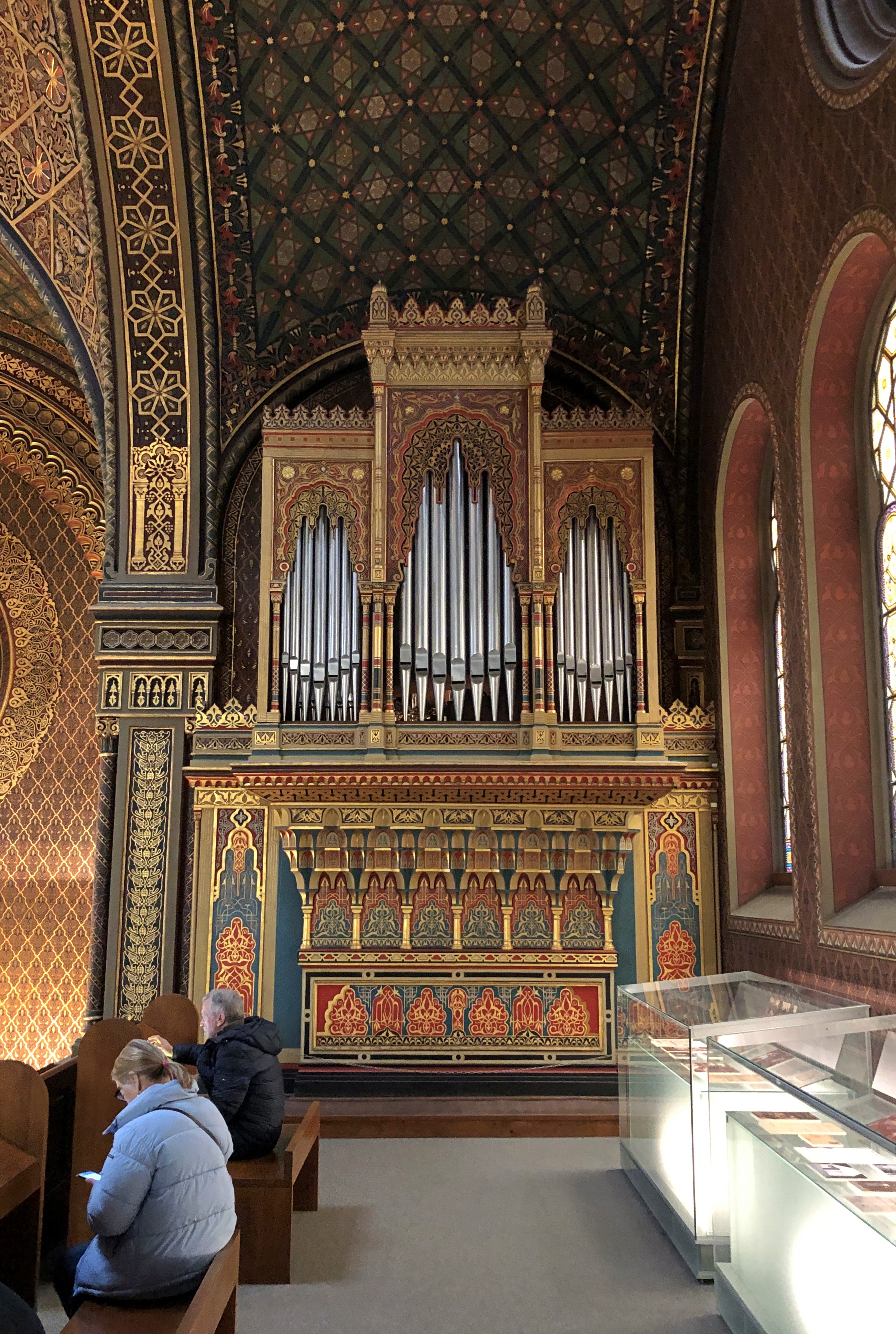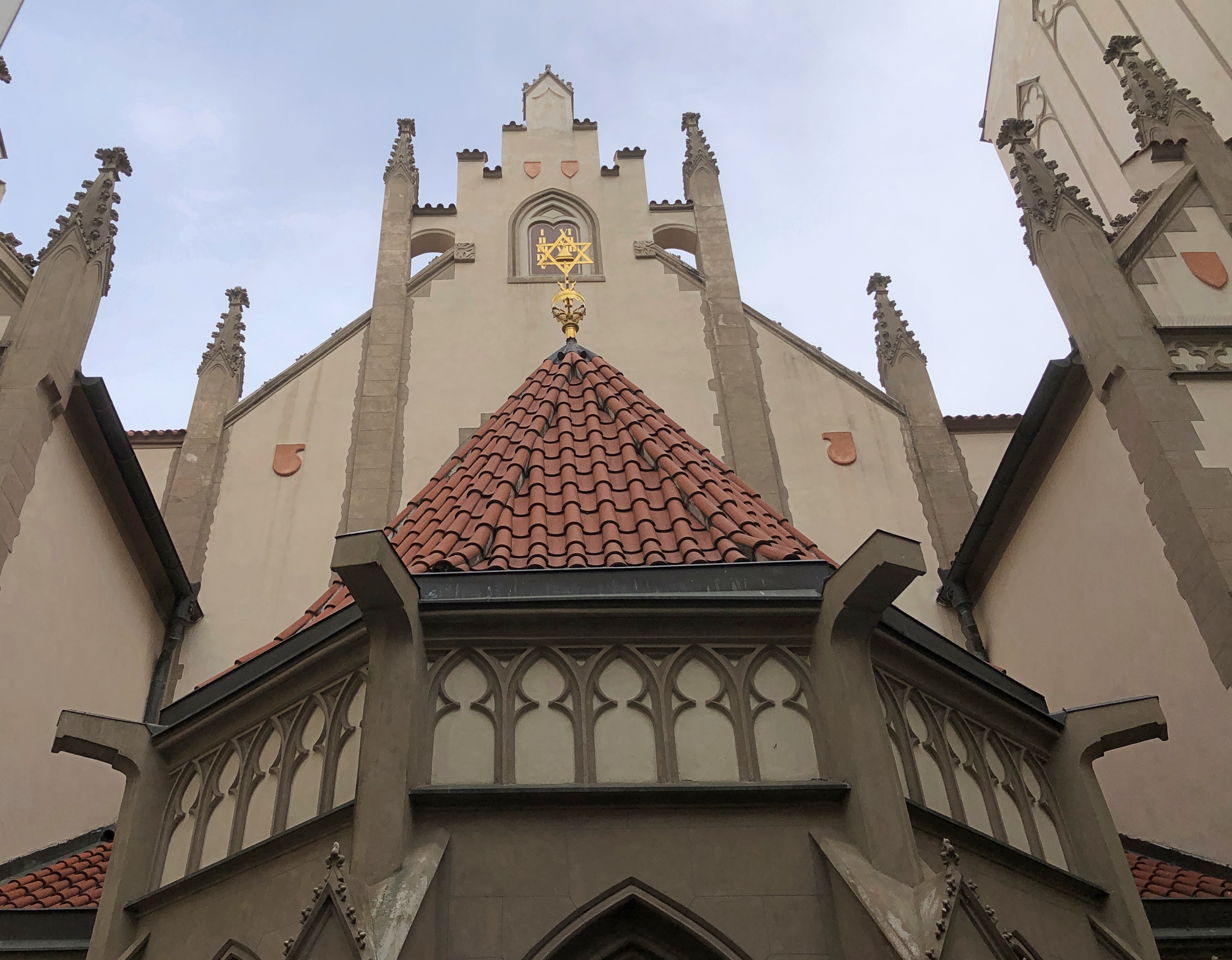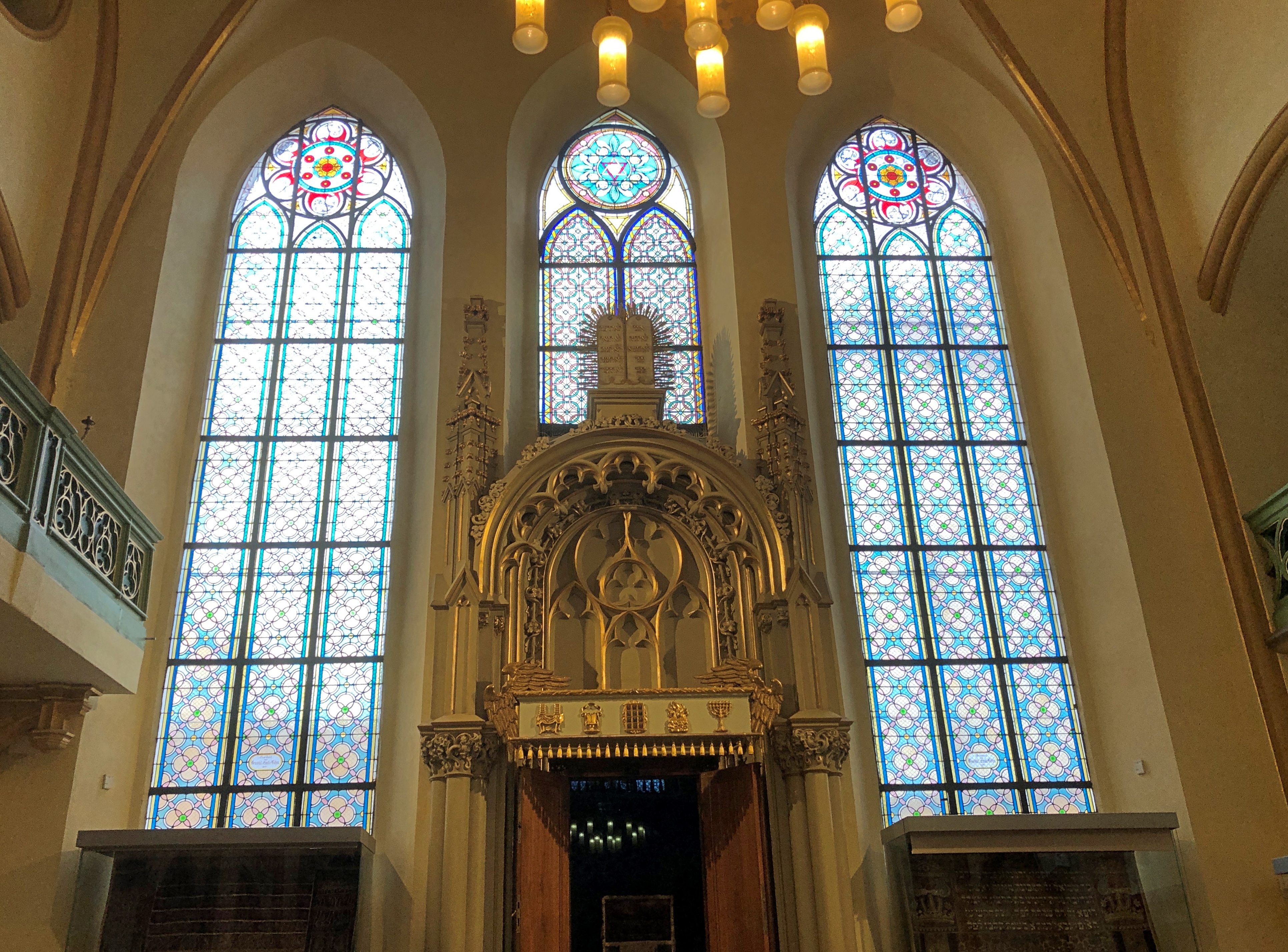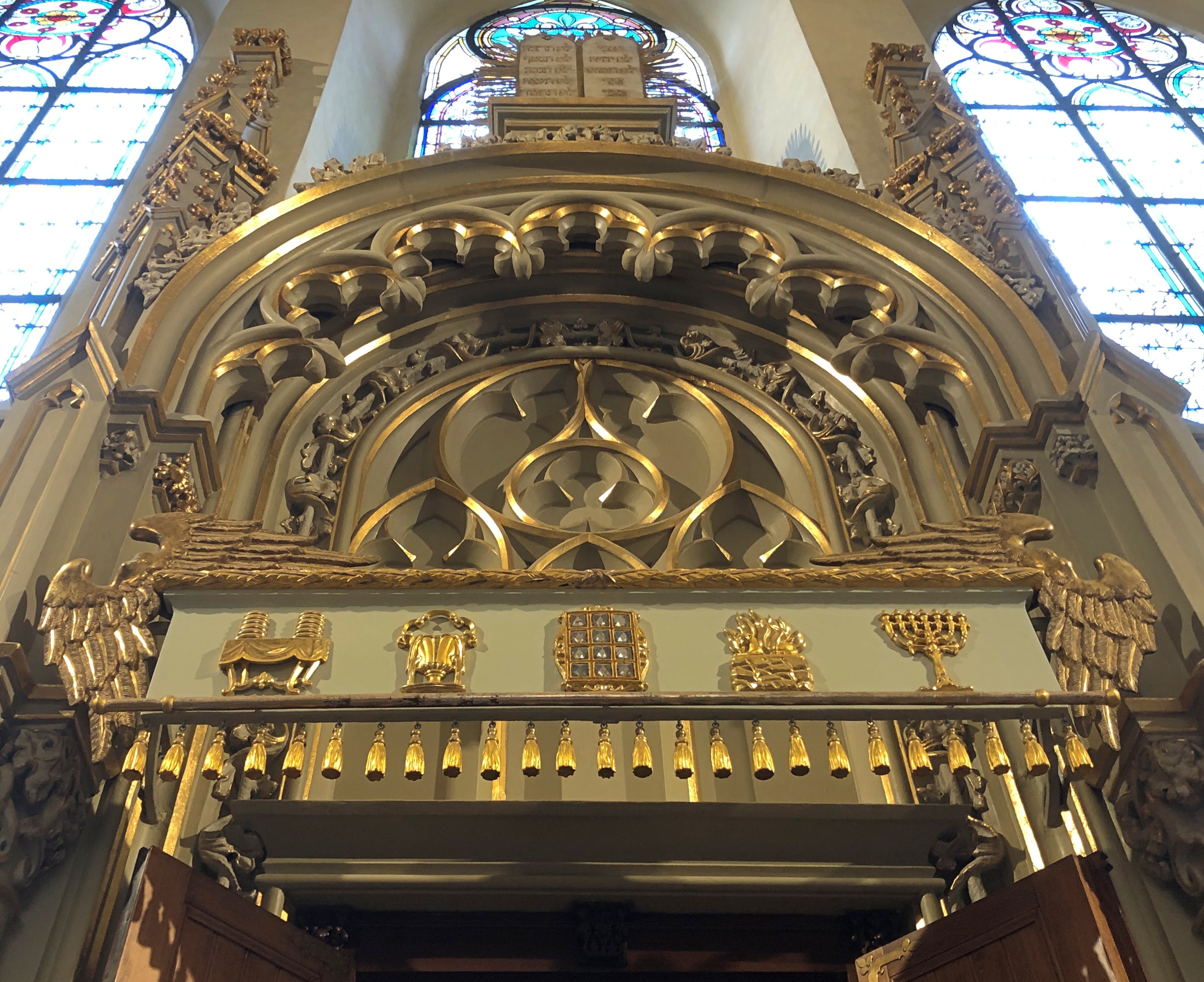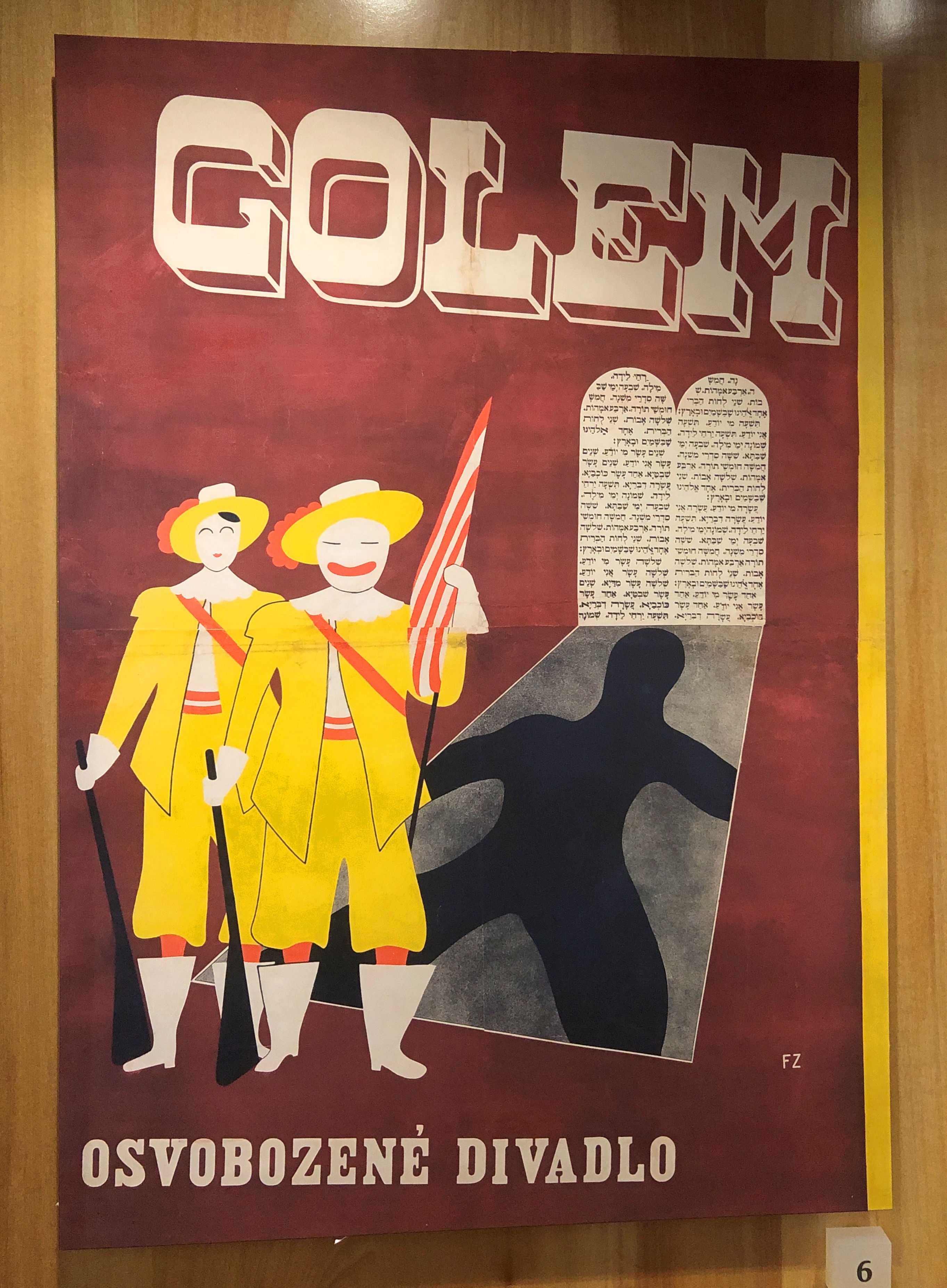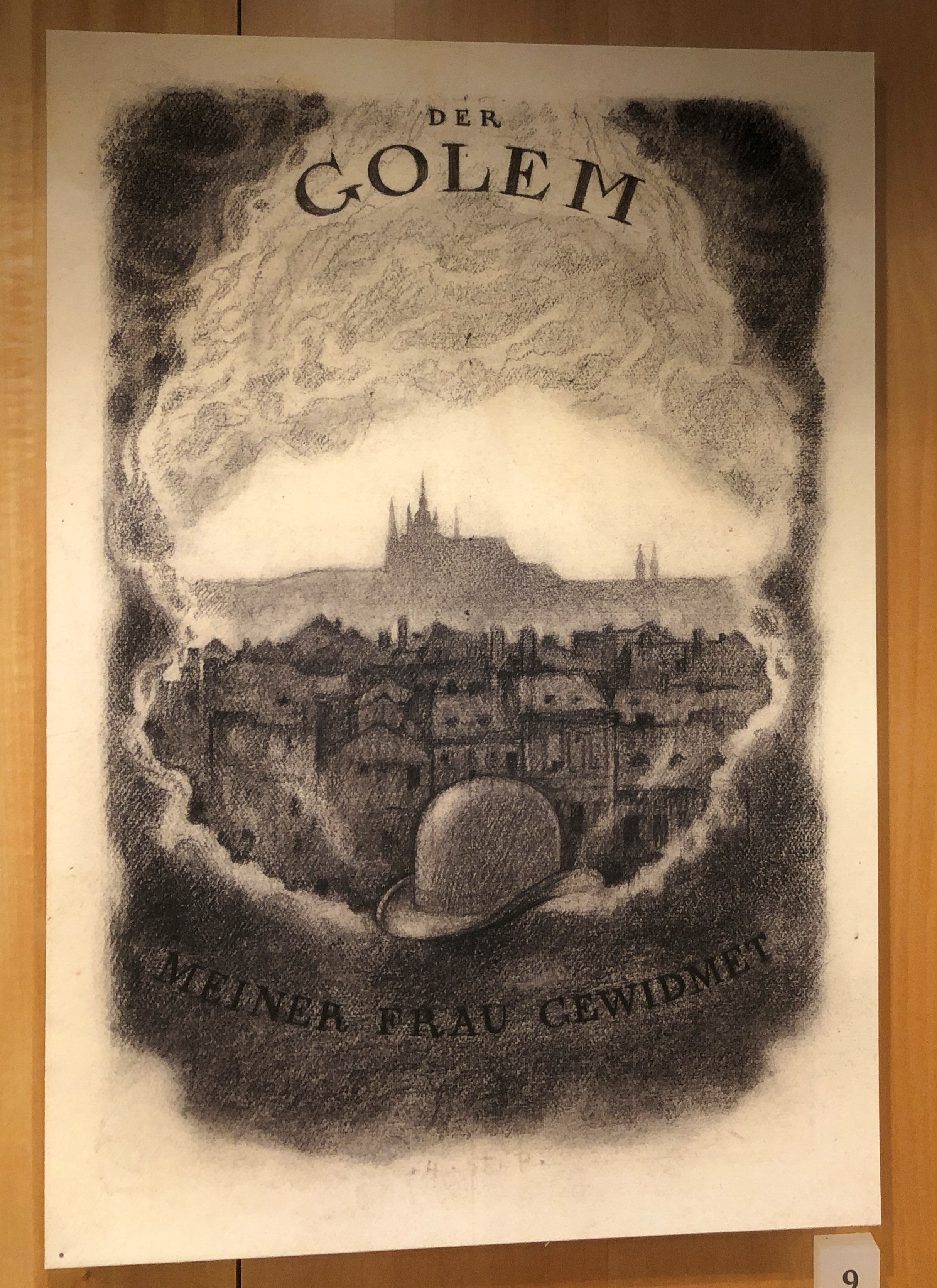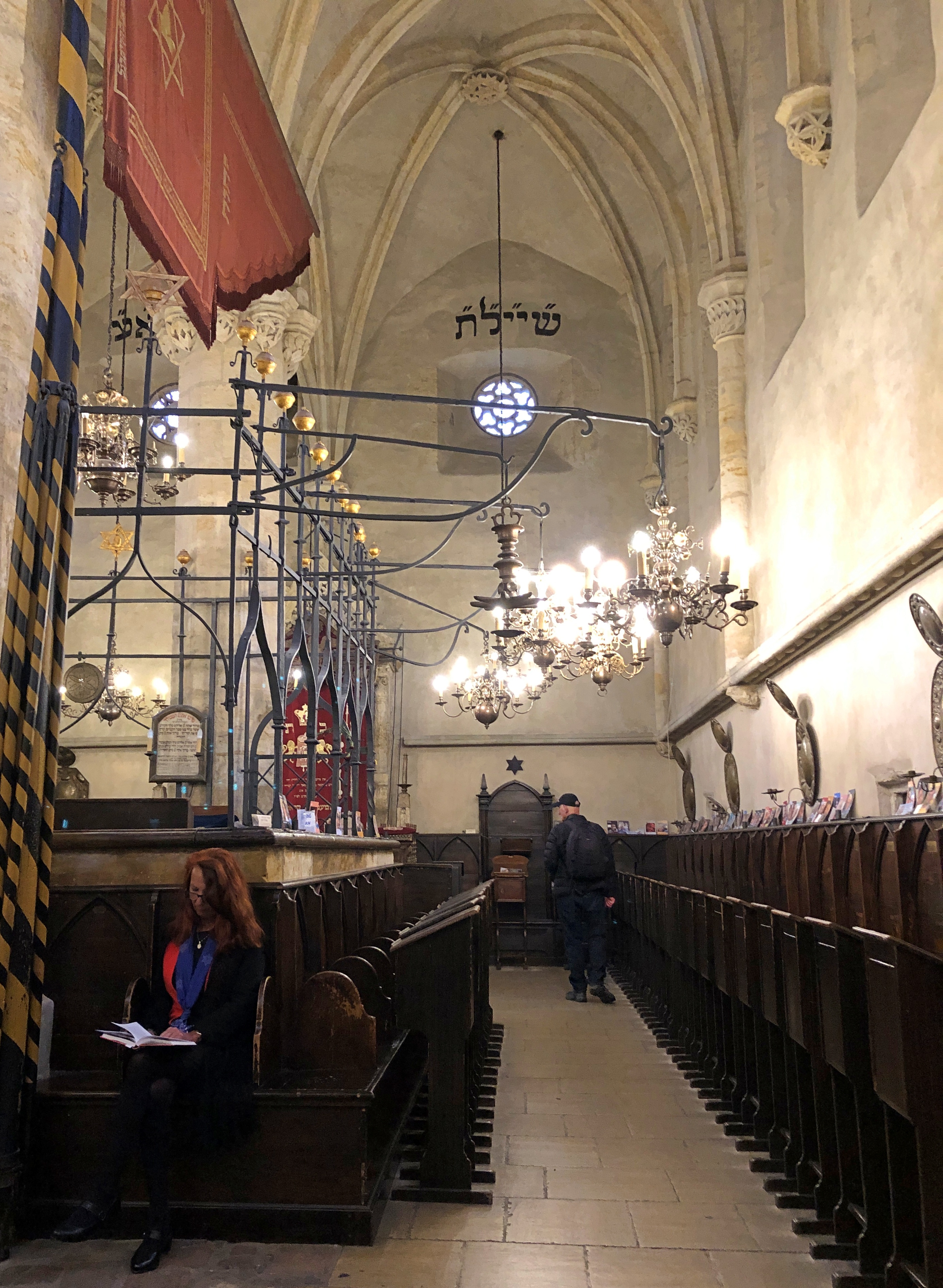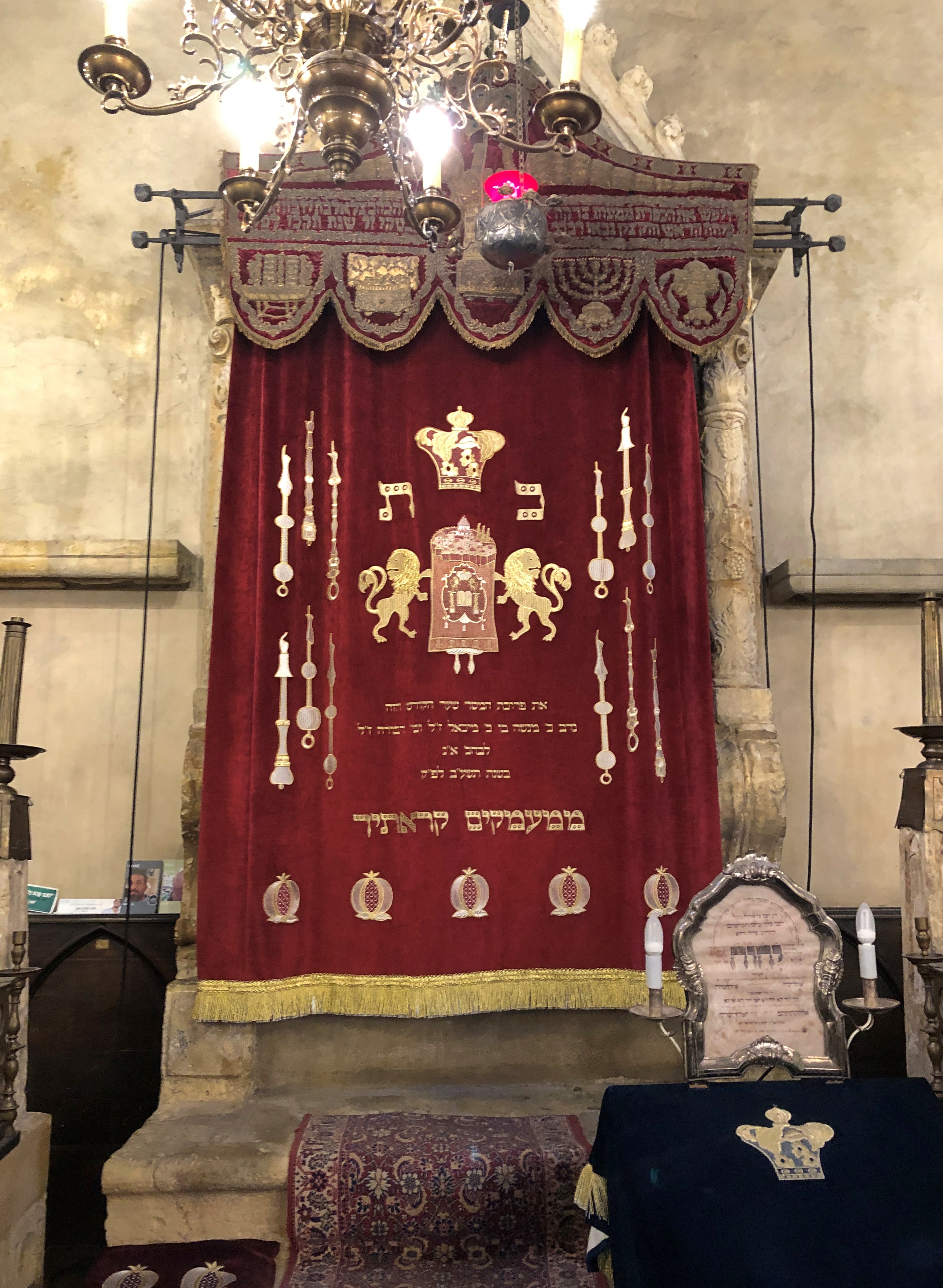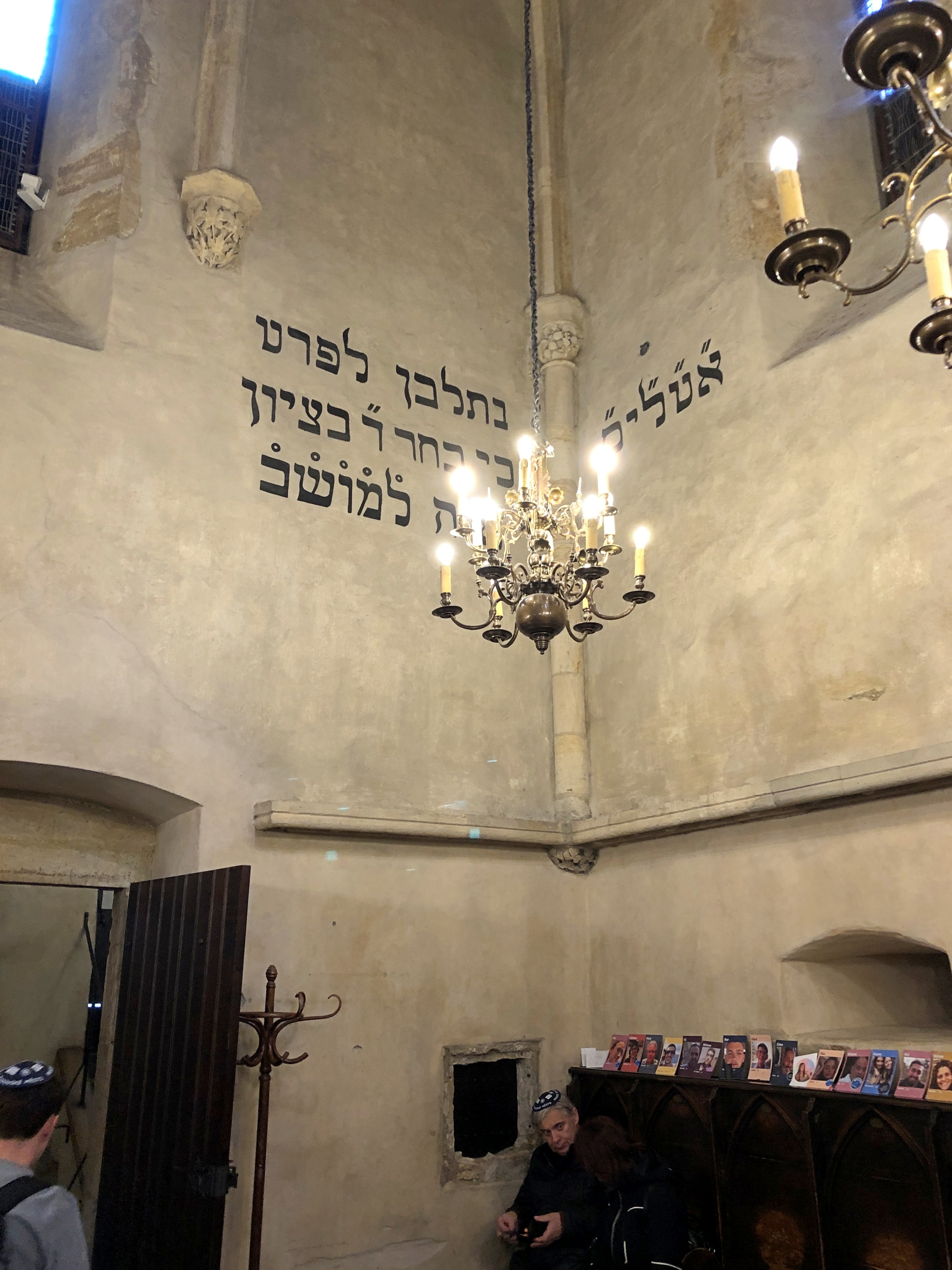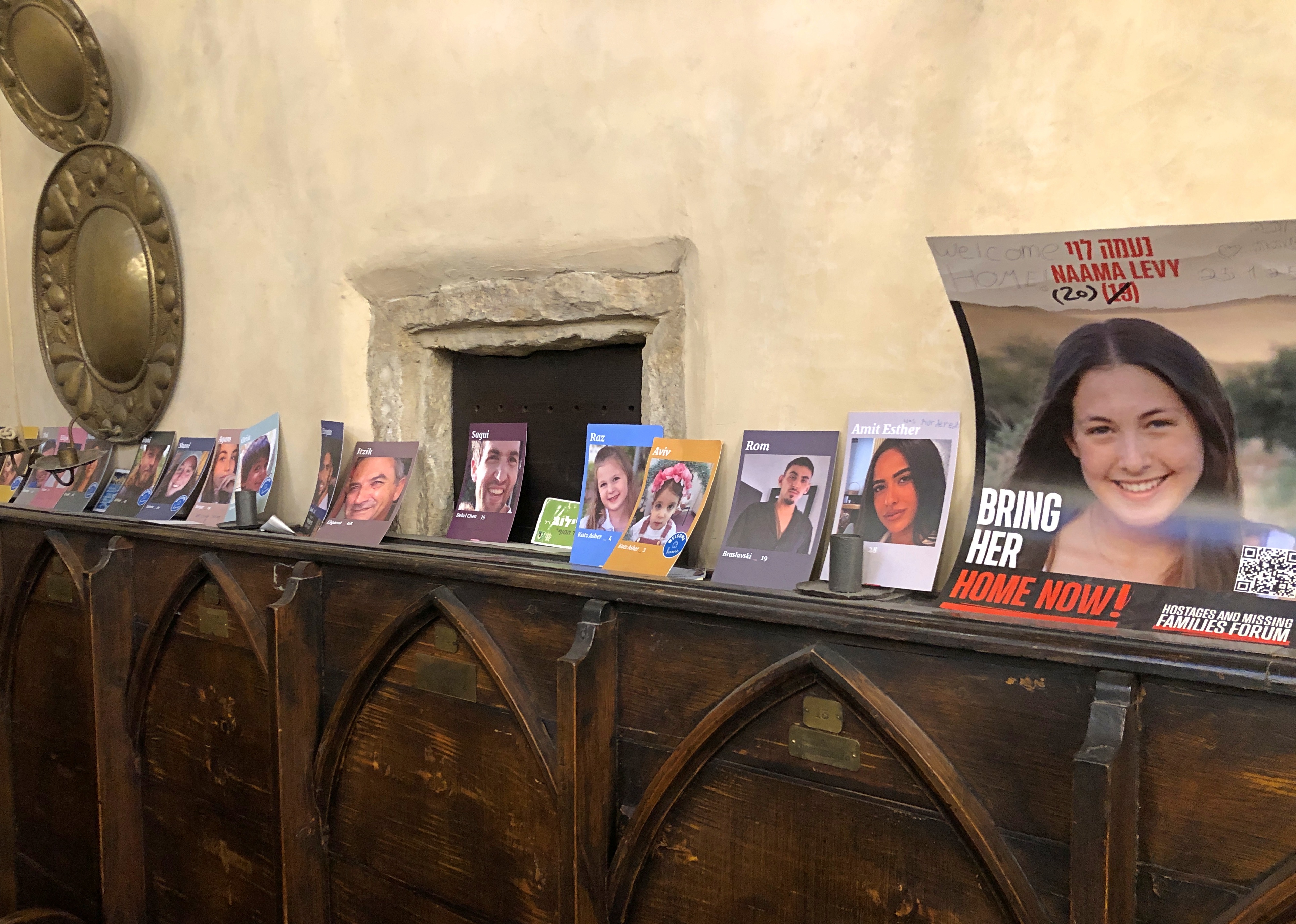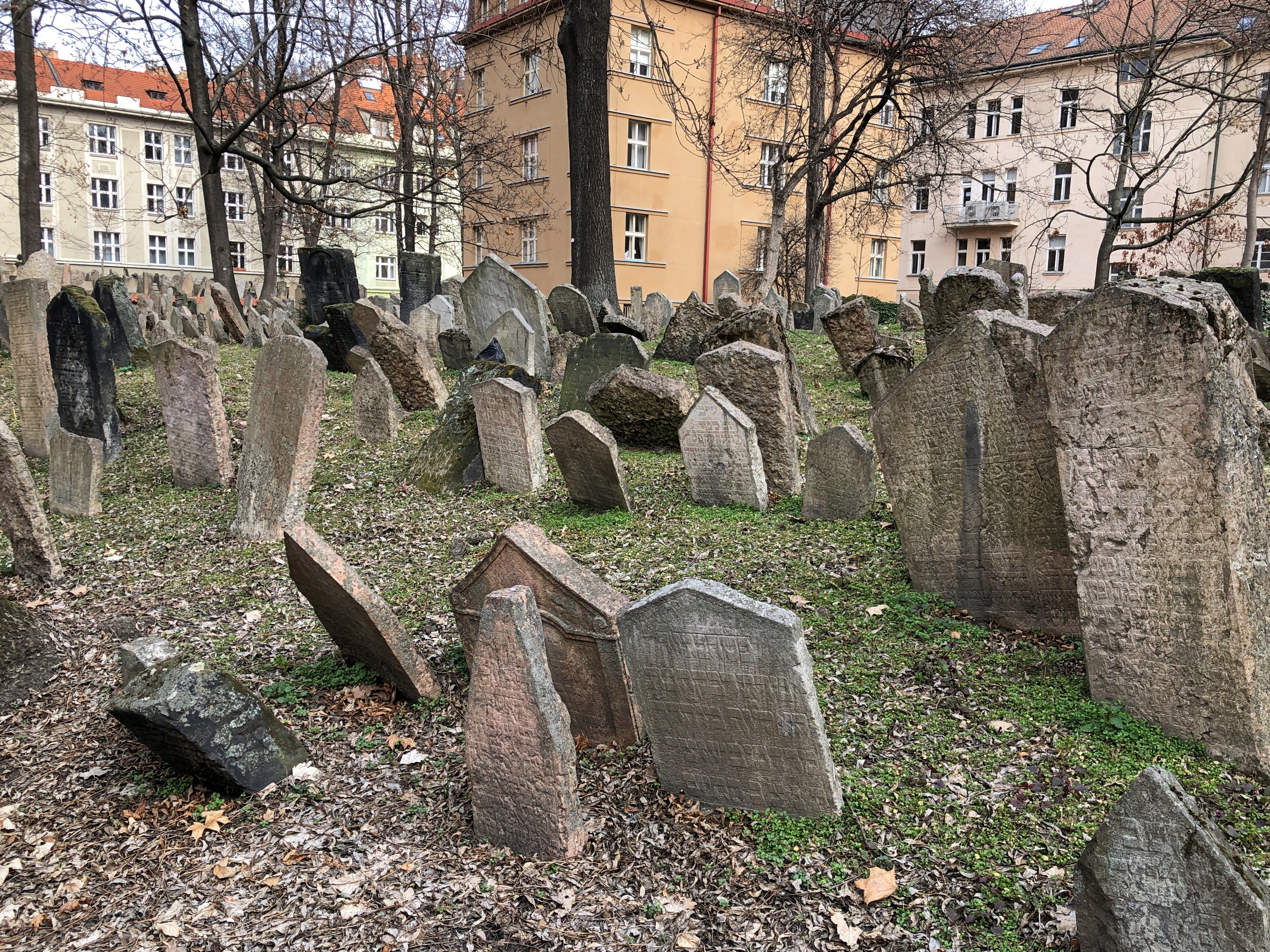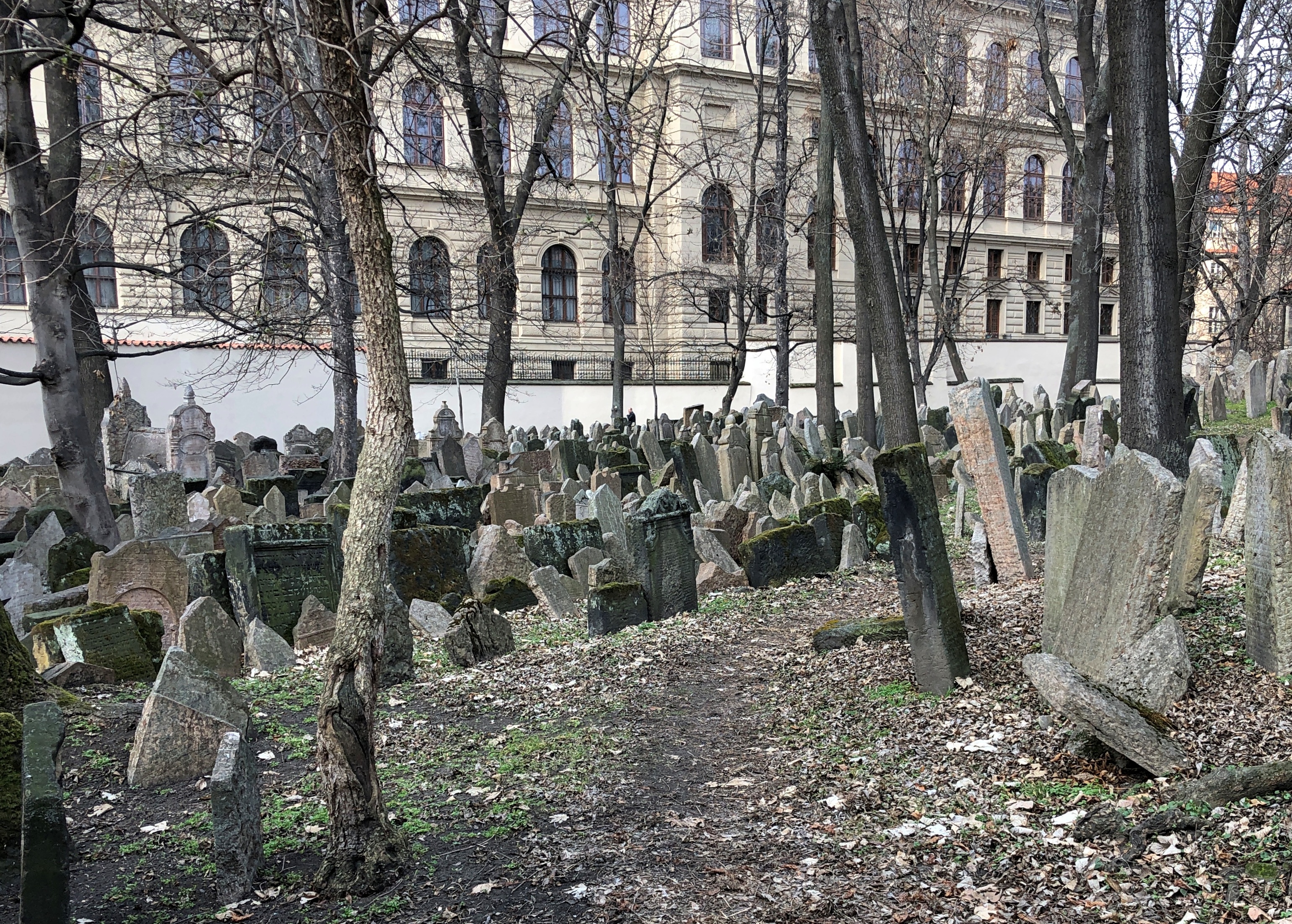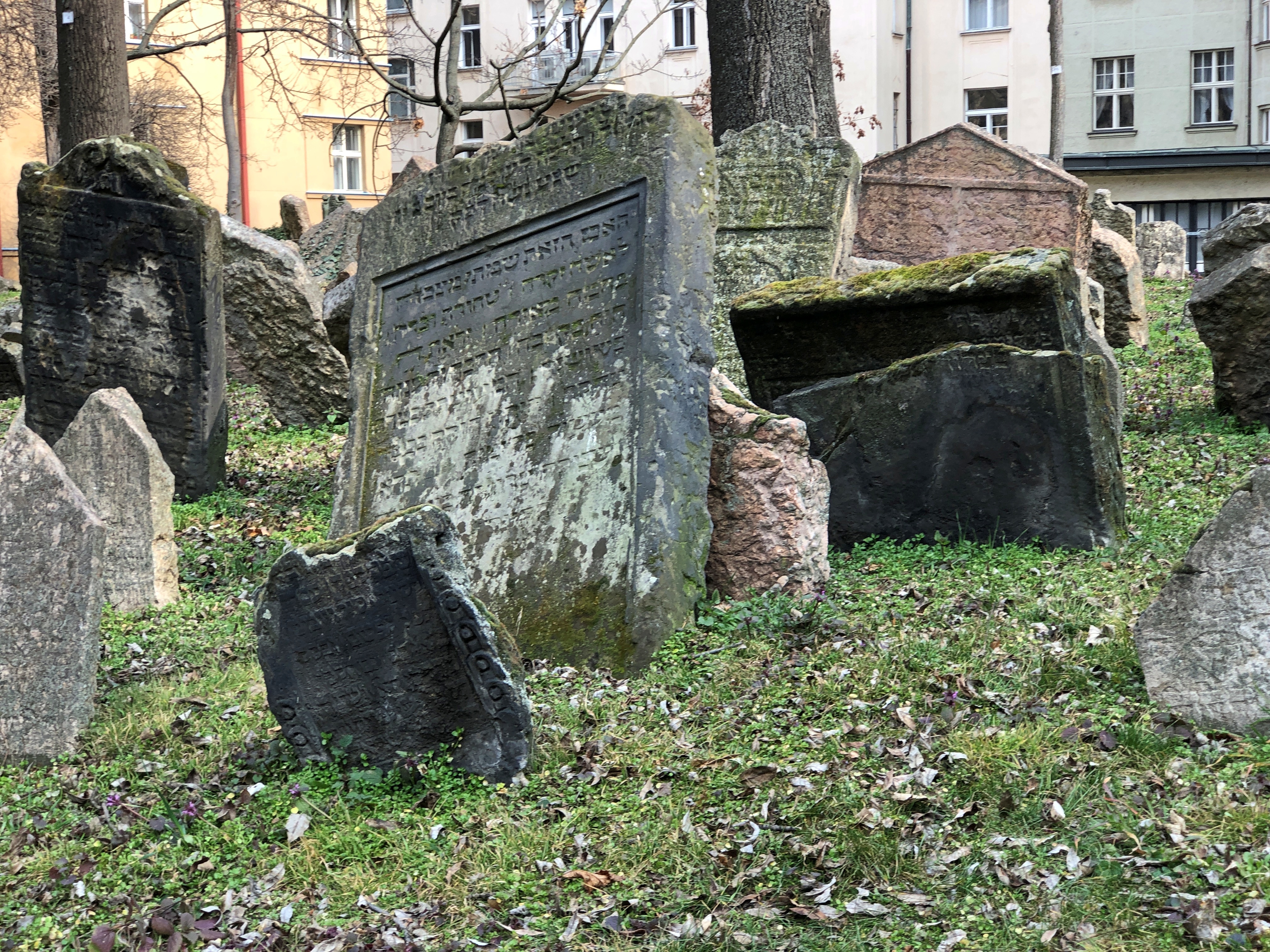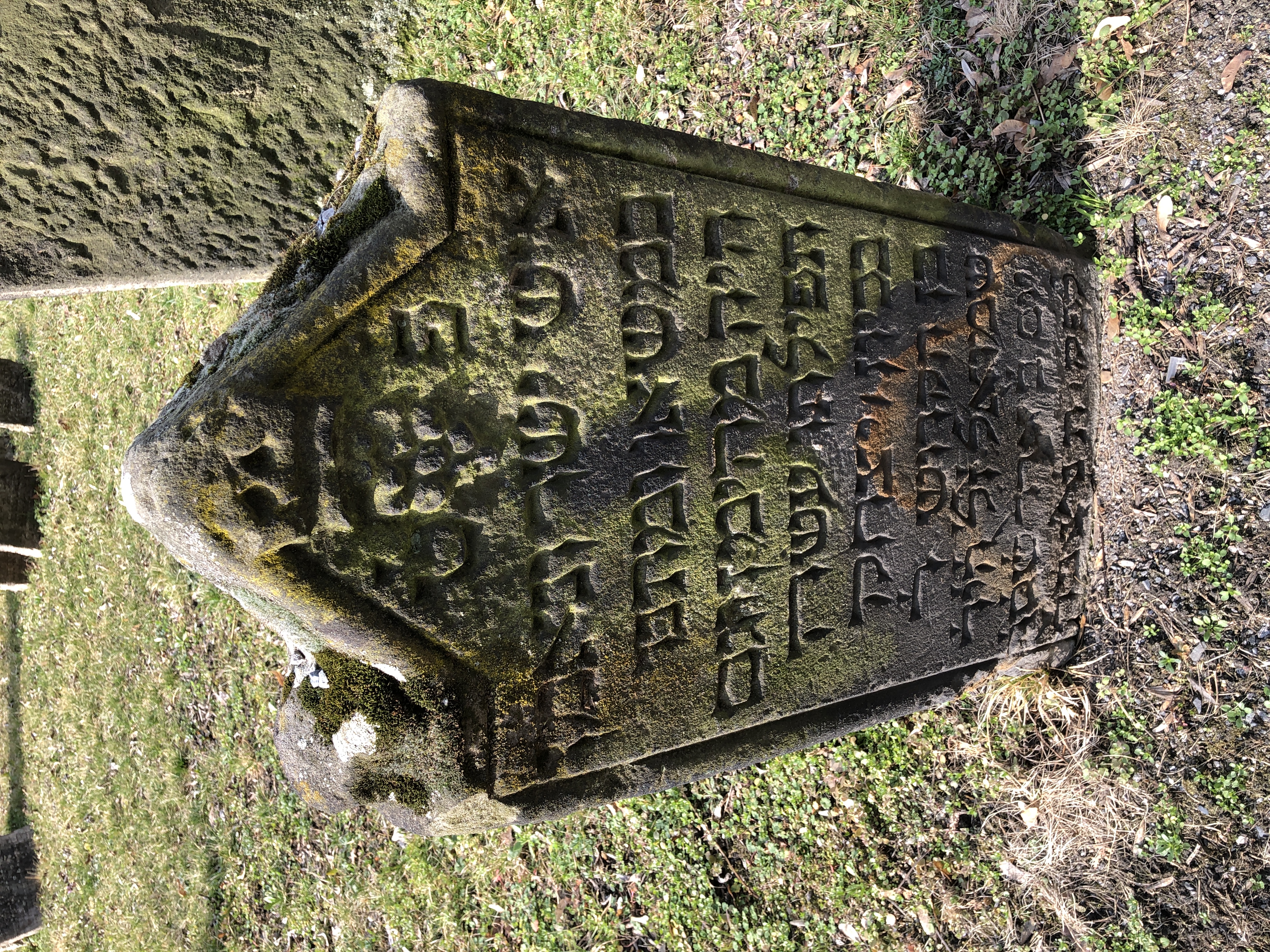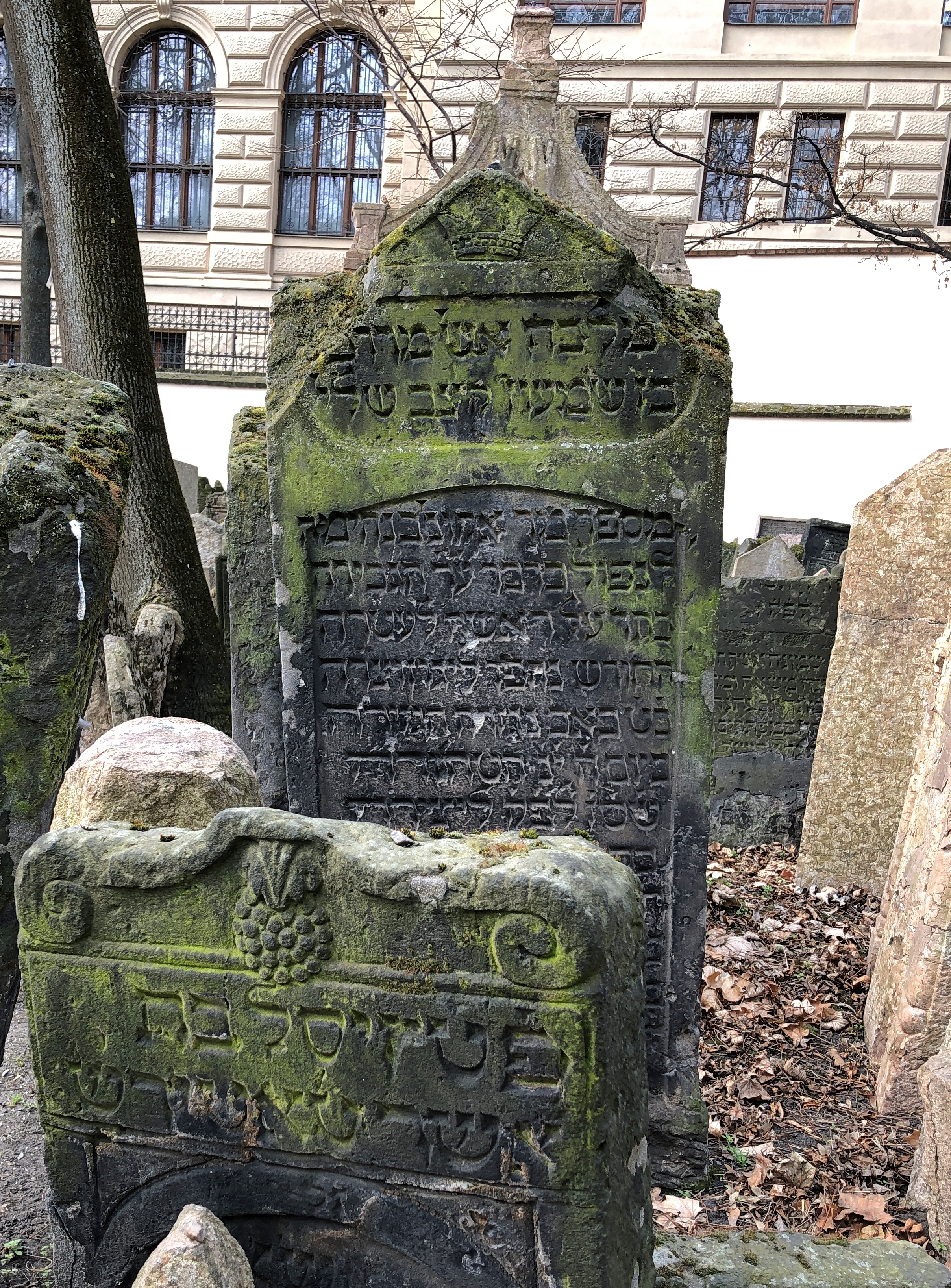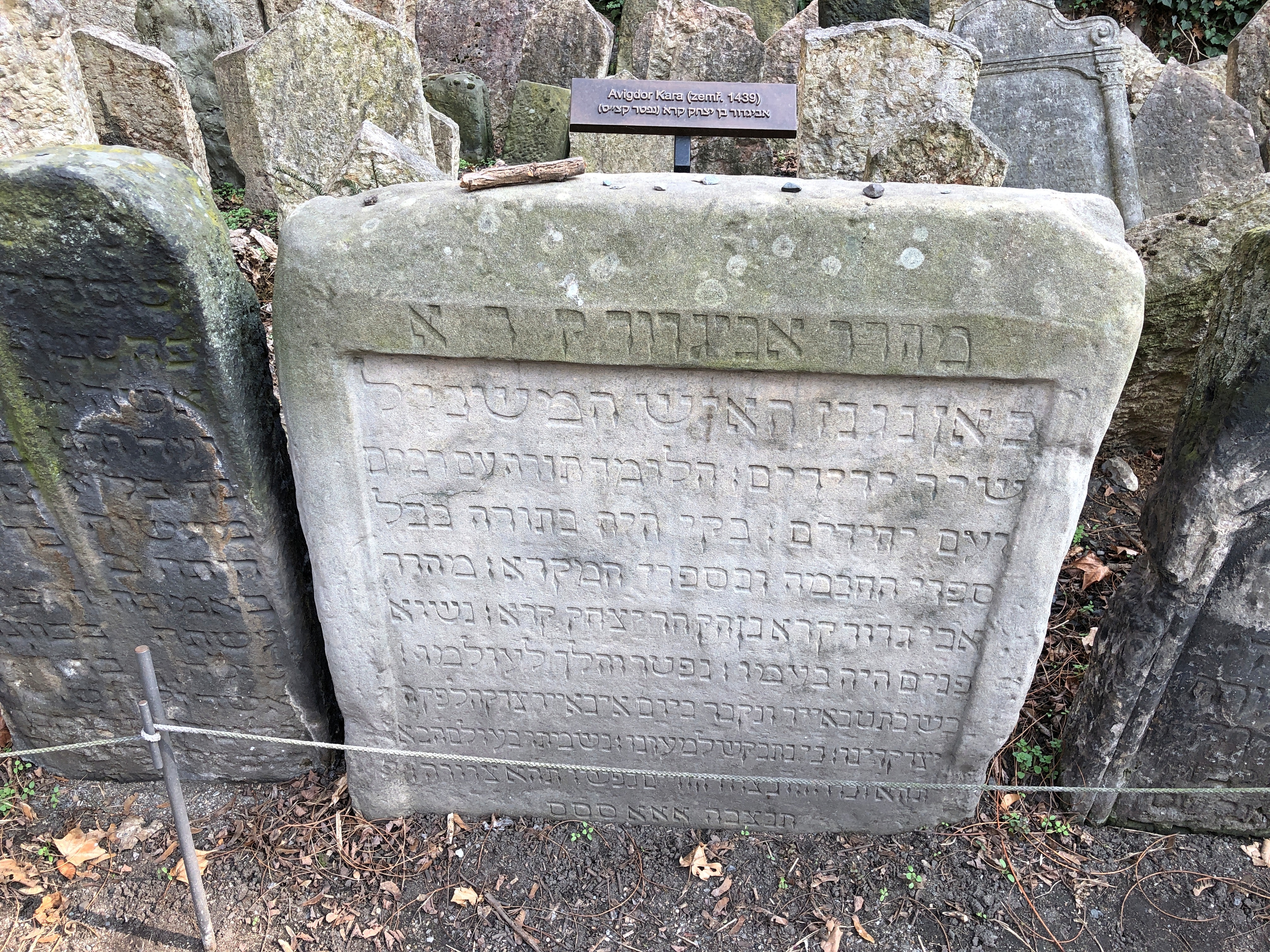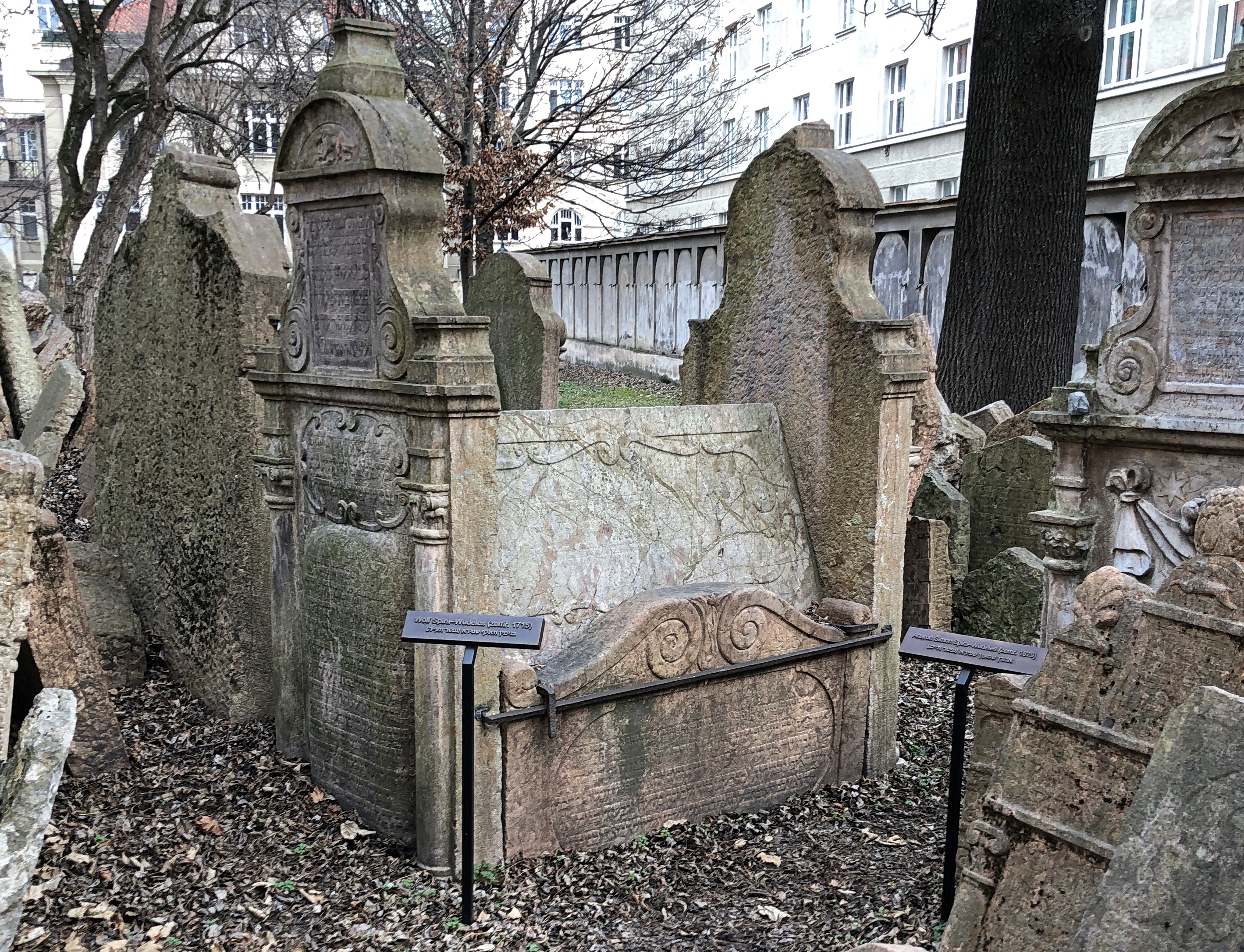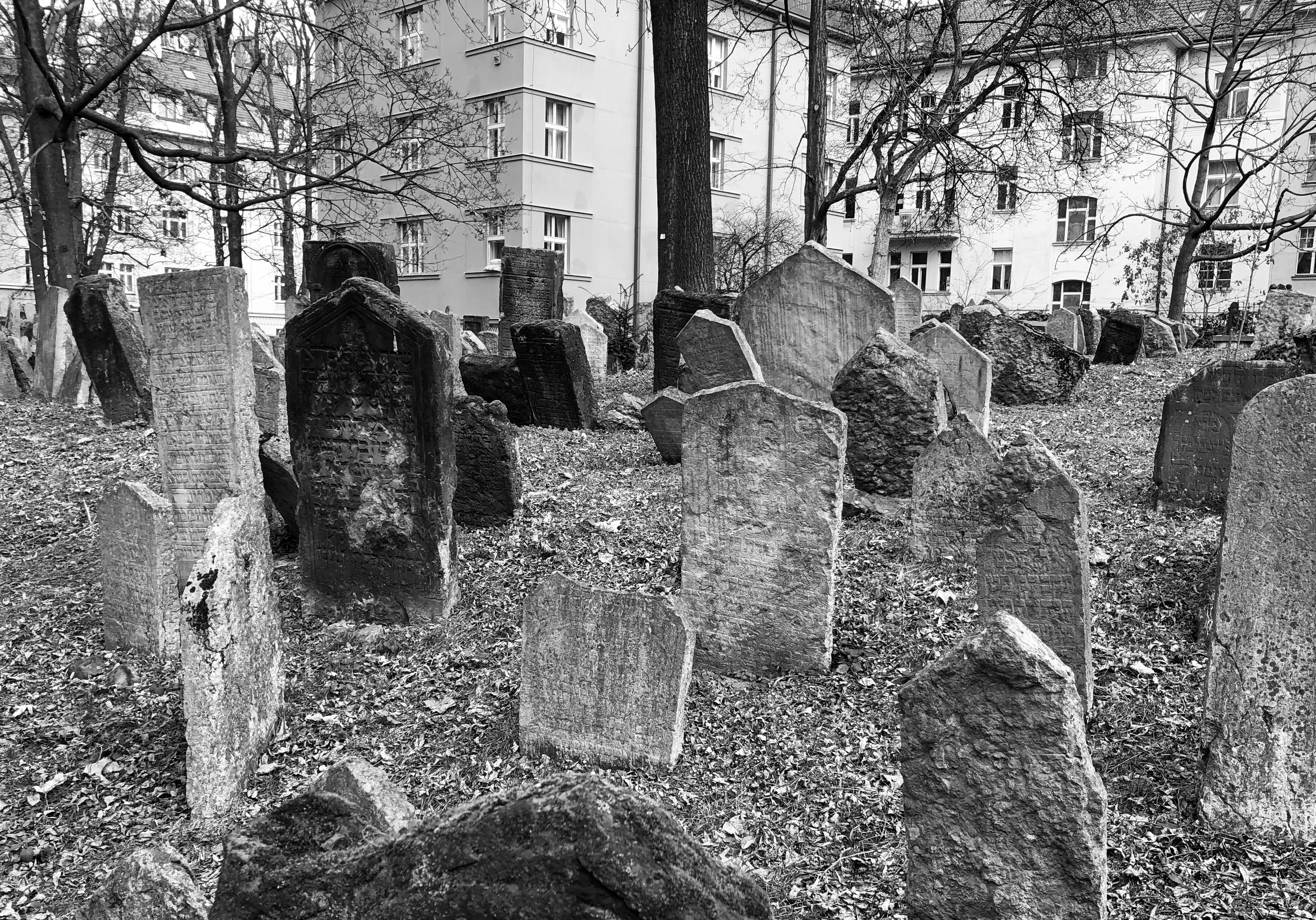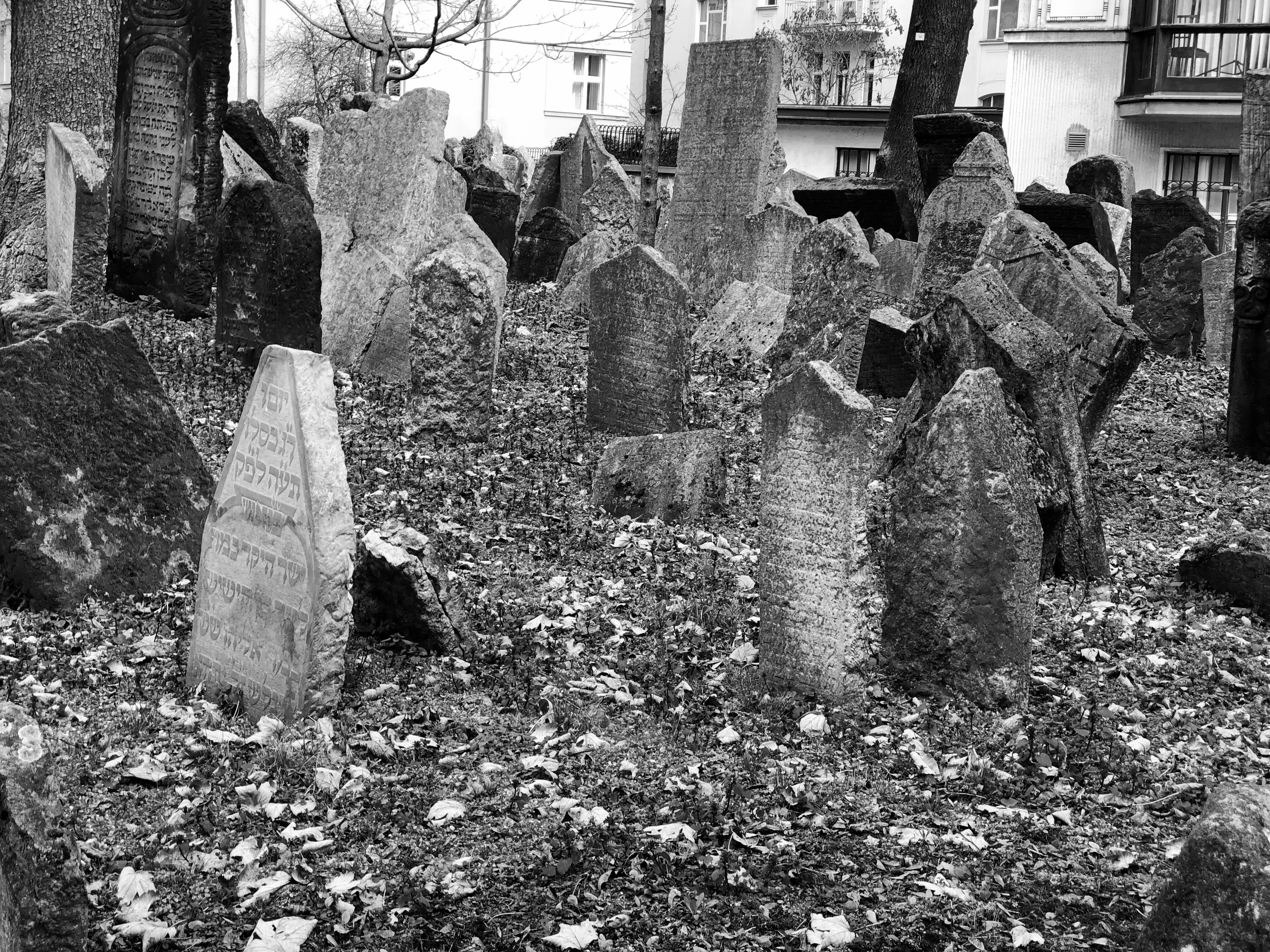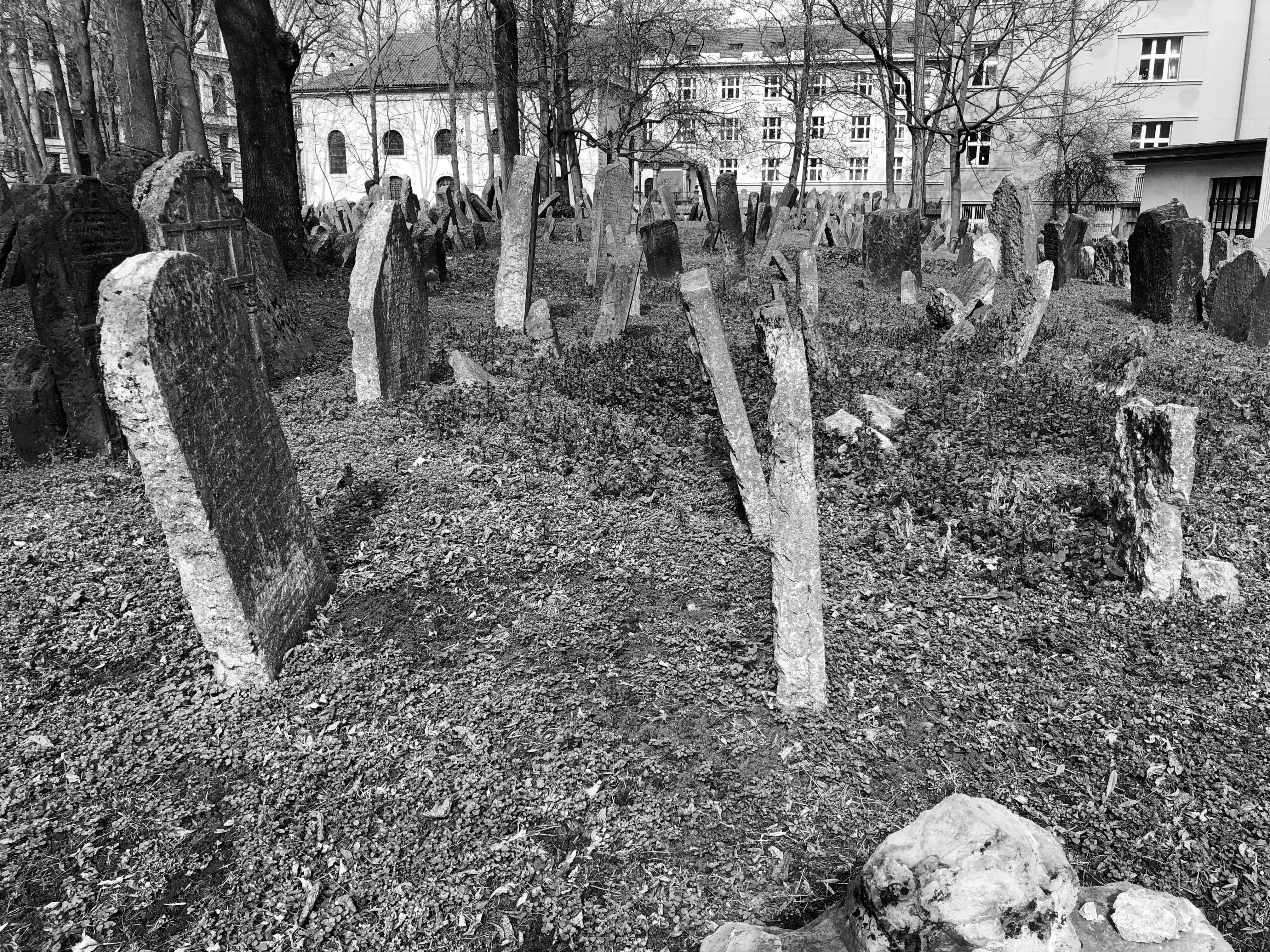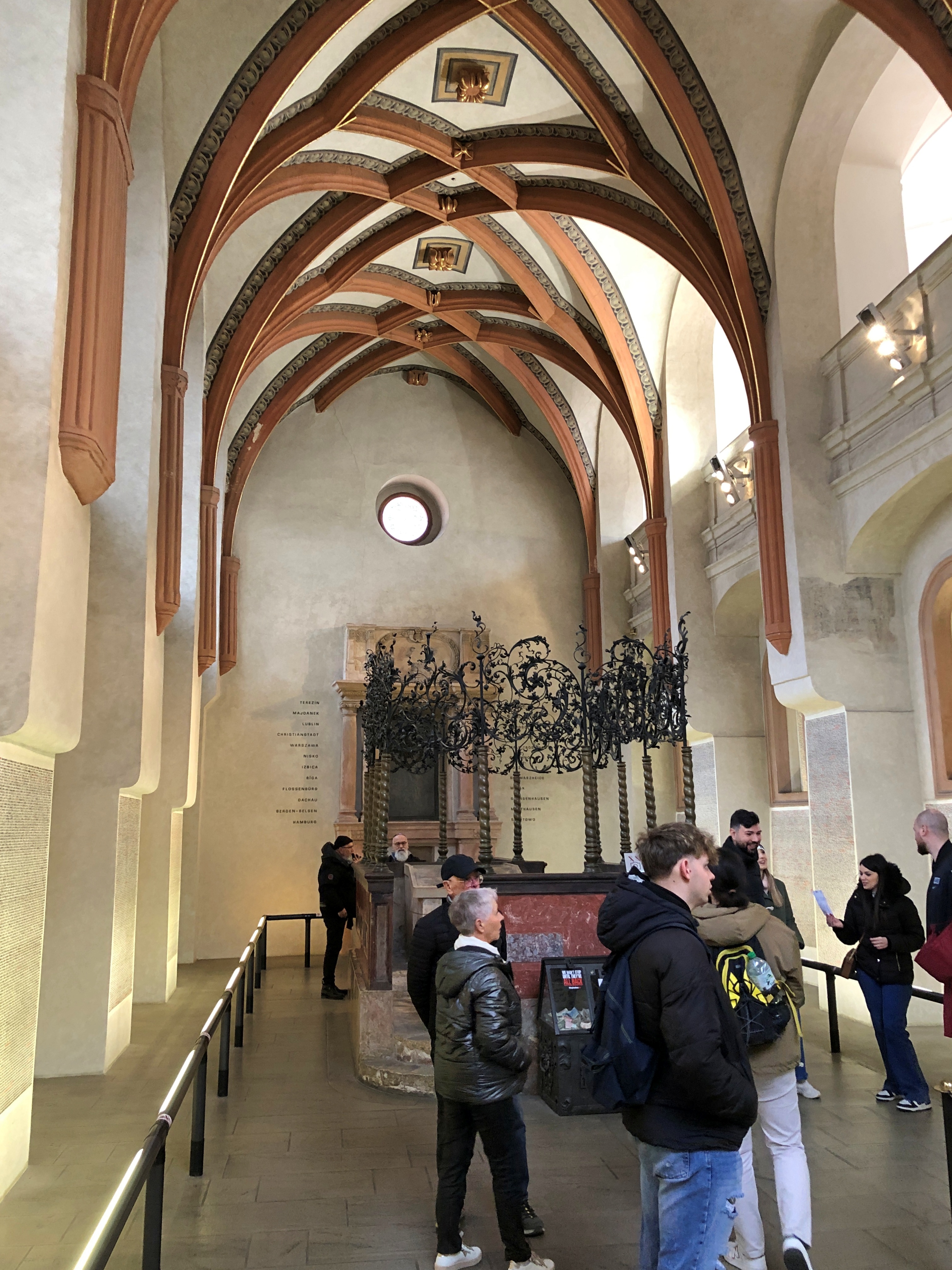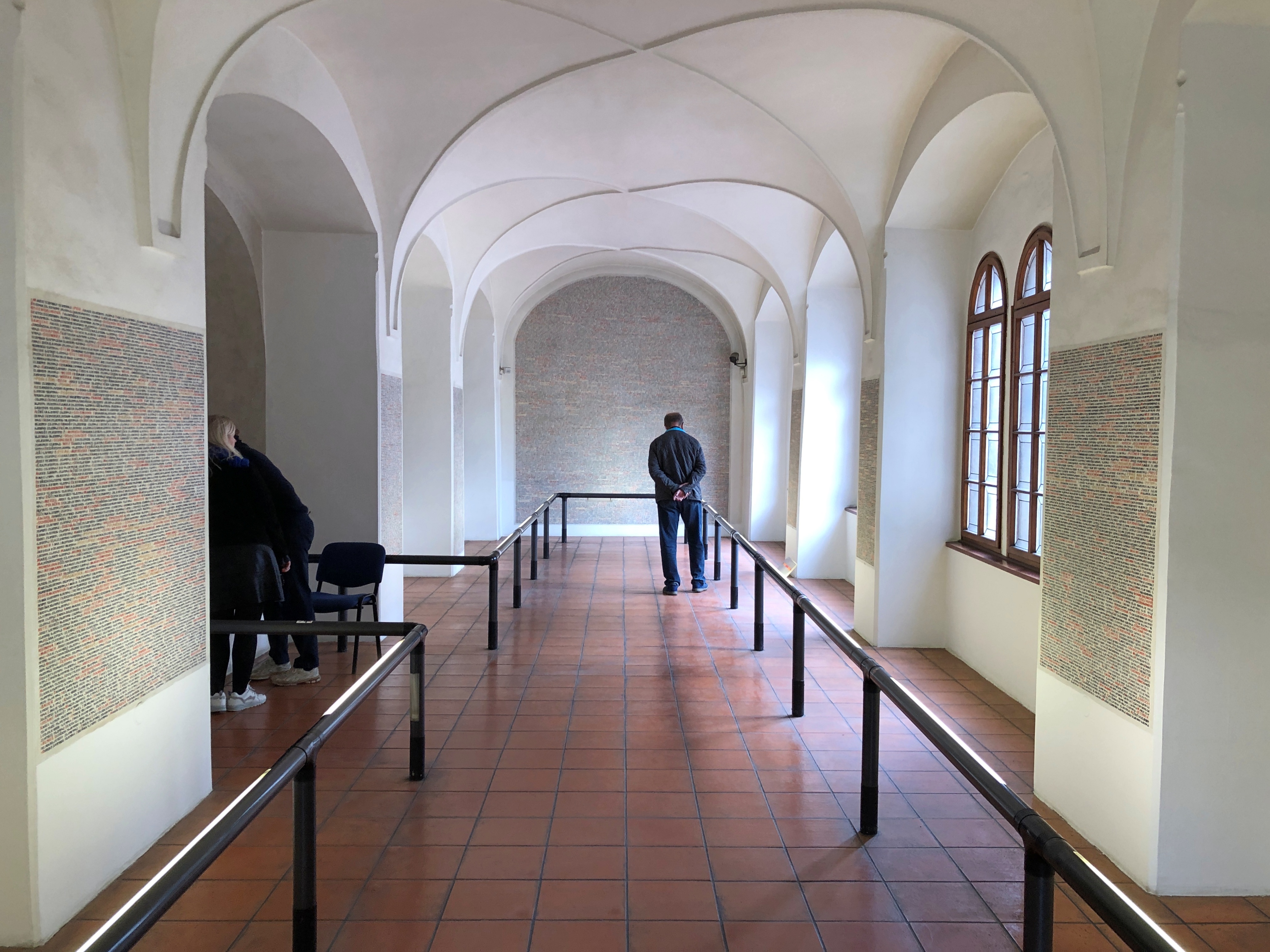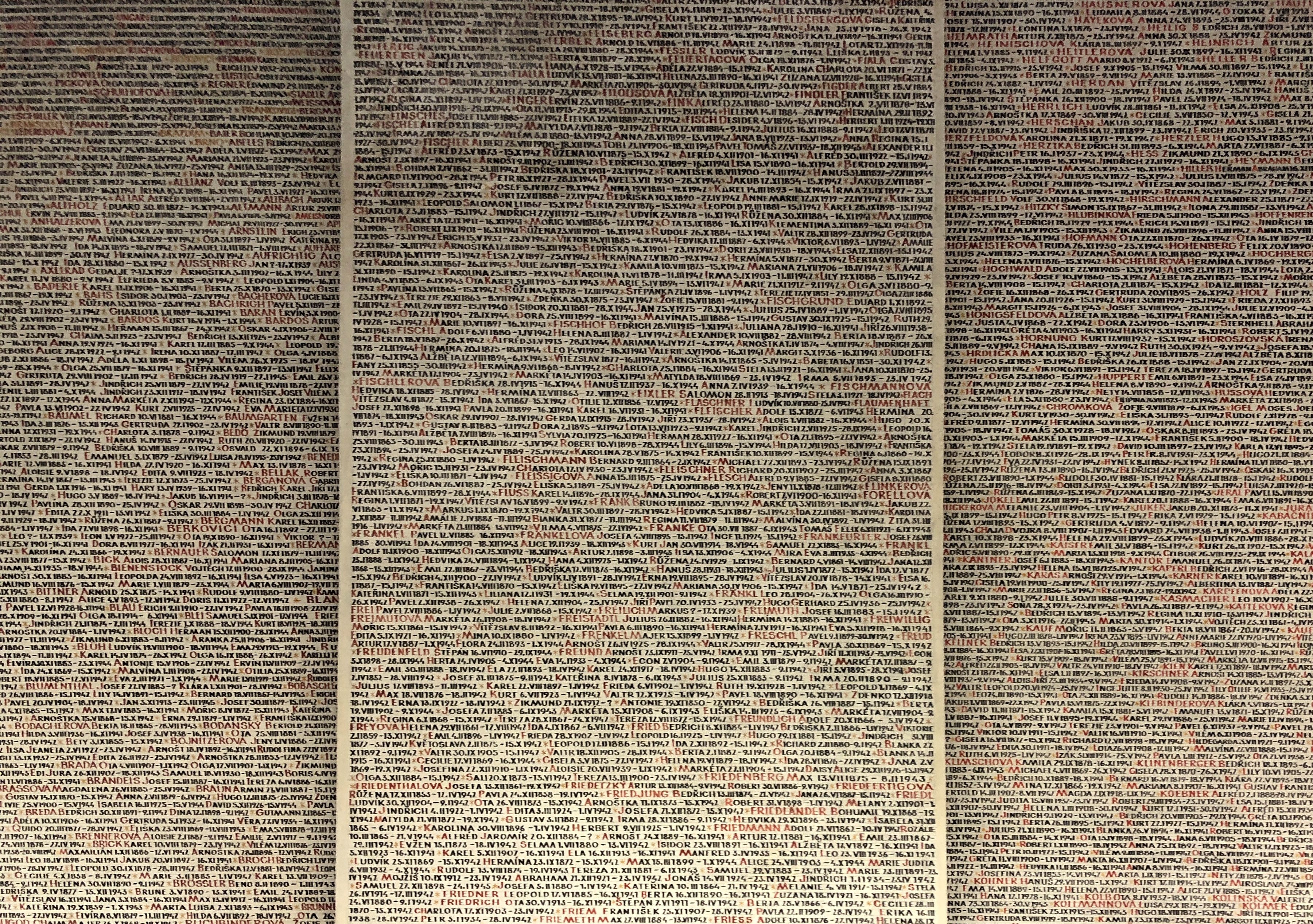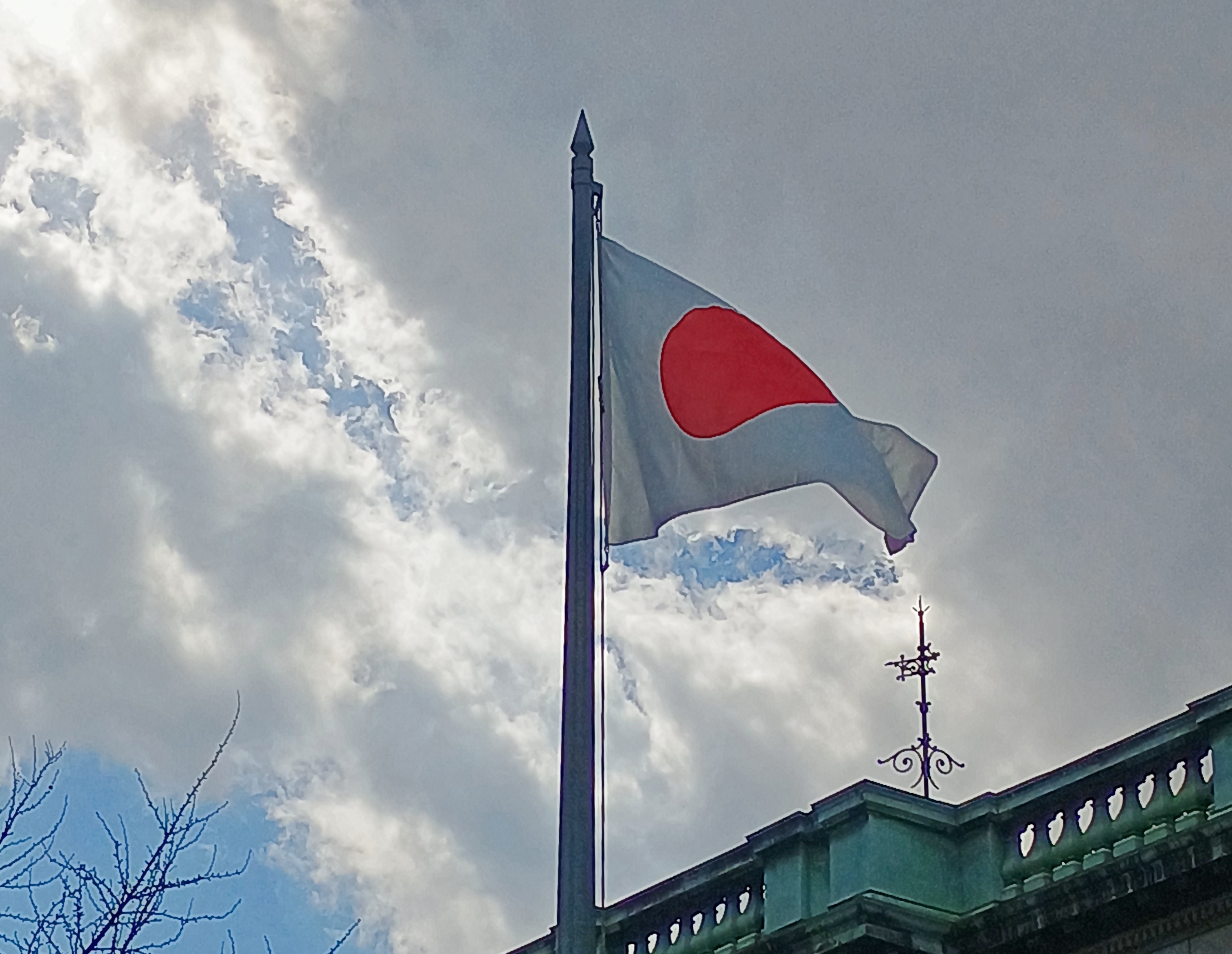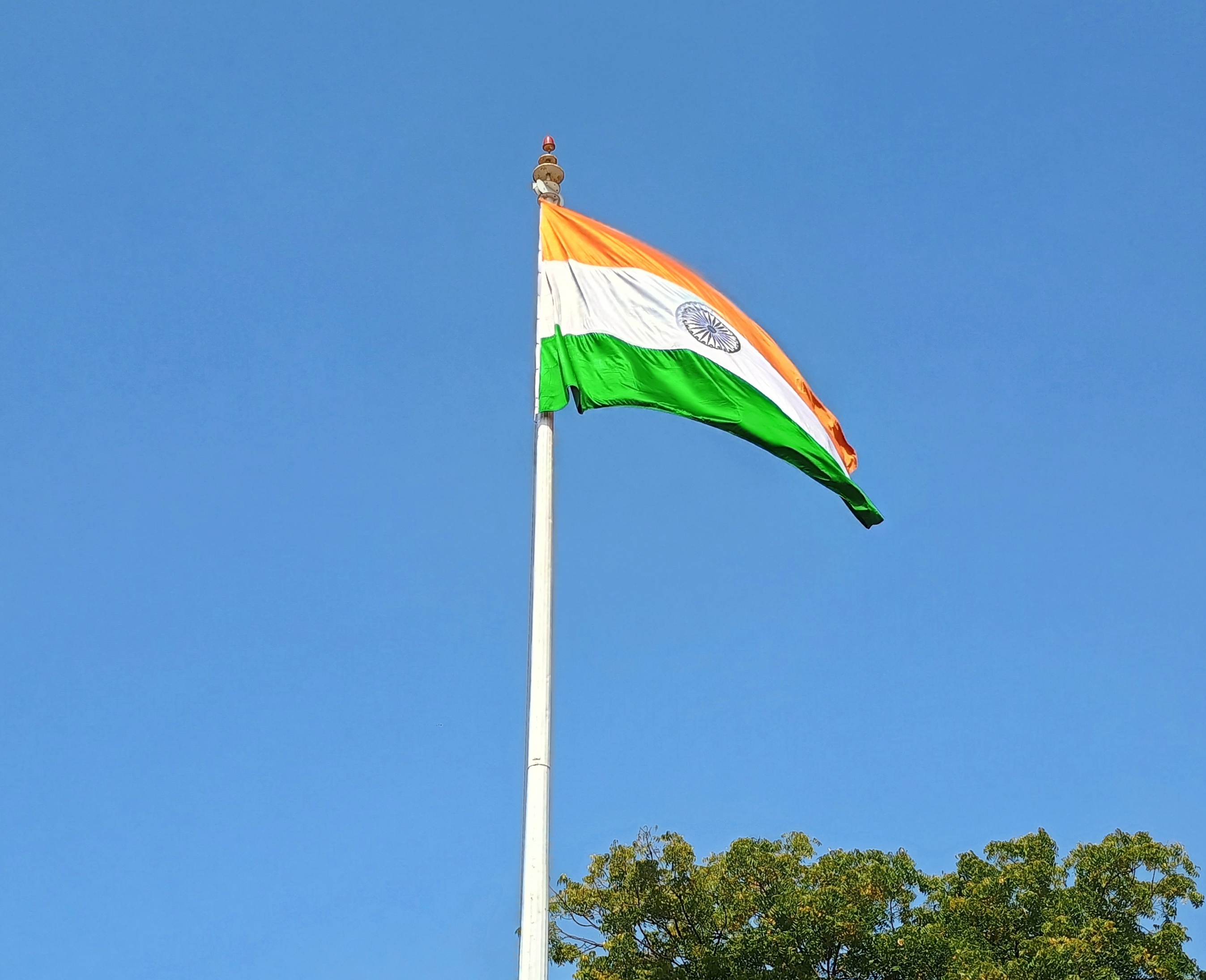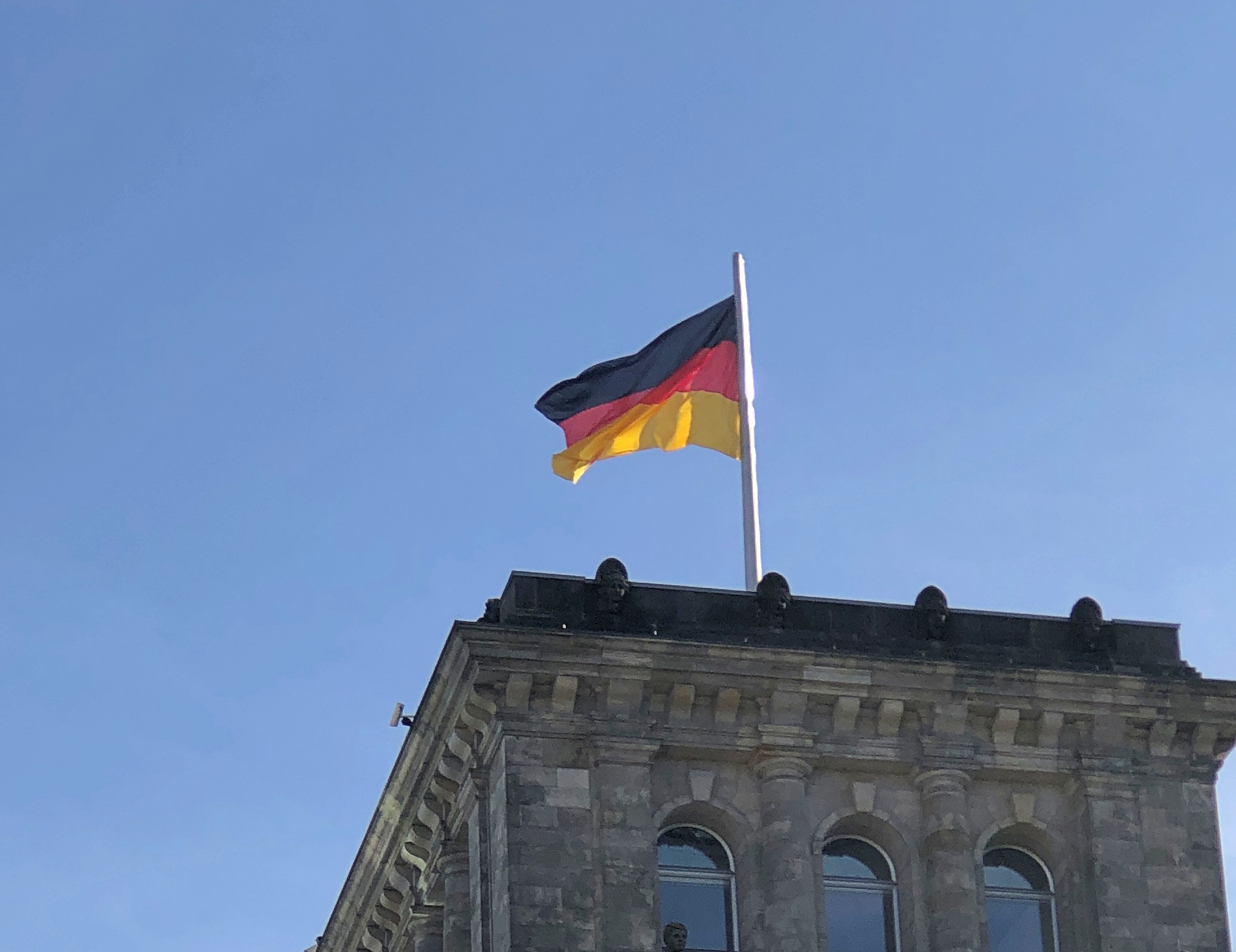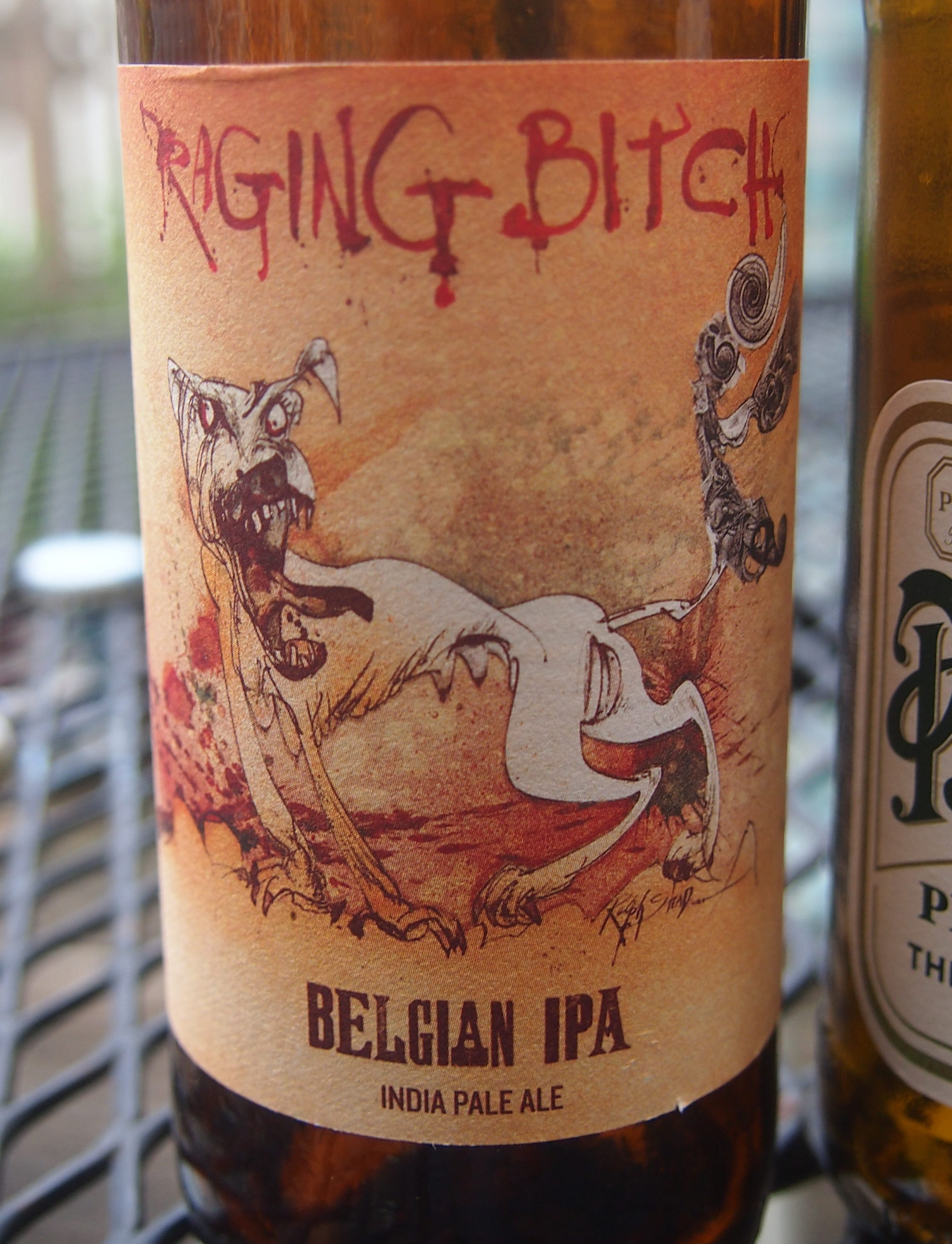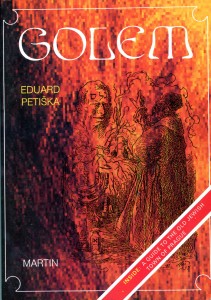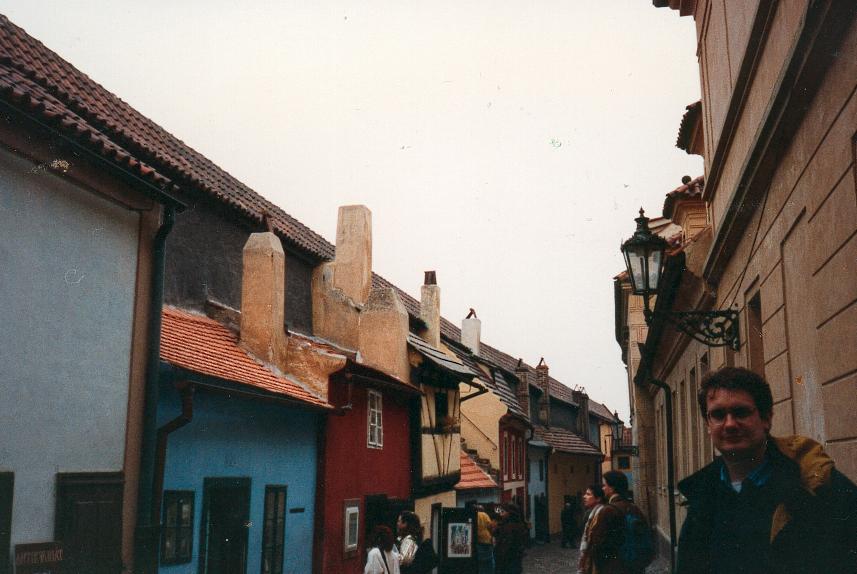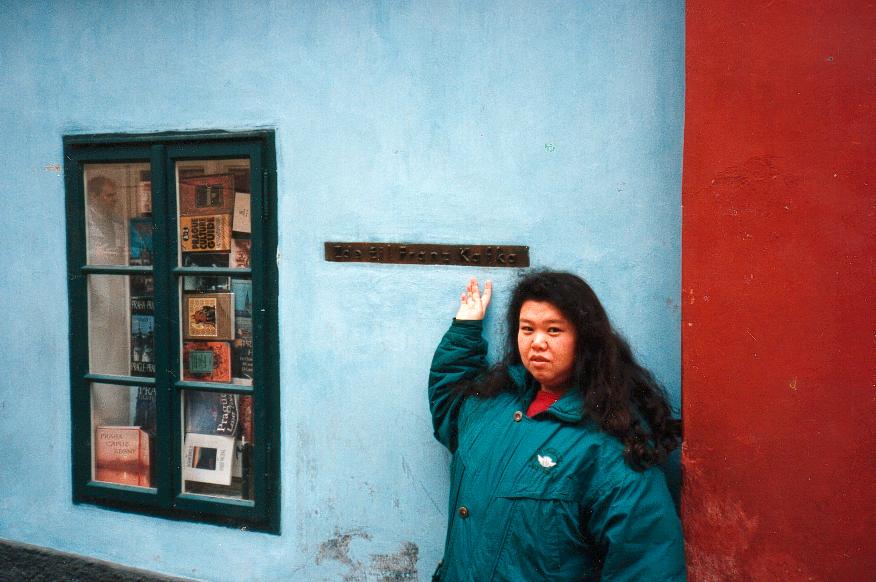On the afternoon of March 12, a gray, chilly day, Jay and I arrived at the Main Railway Station in Prague (Praha hlavní nádraží) to catch the EC 170 back to Berlin, leaving at 4:28 pm. We were early, and had time to look around the station.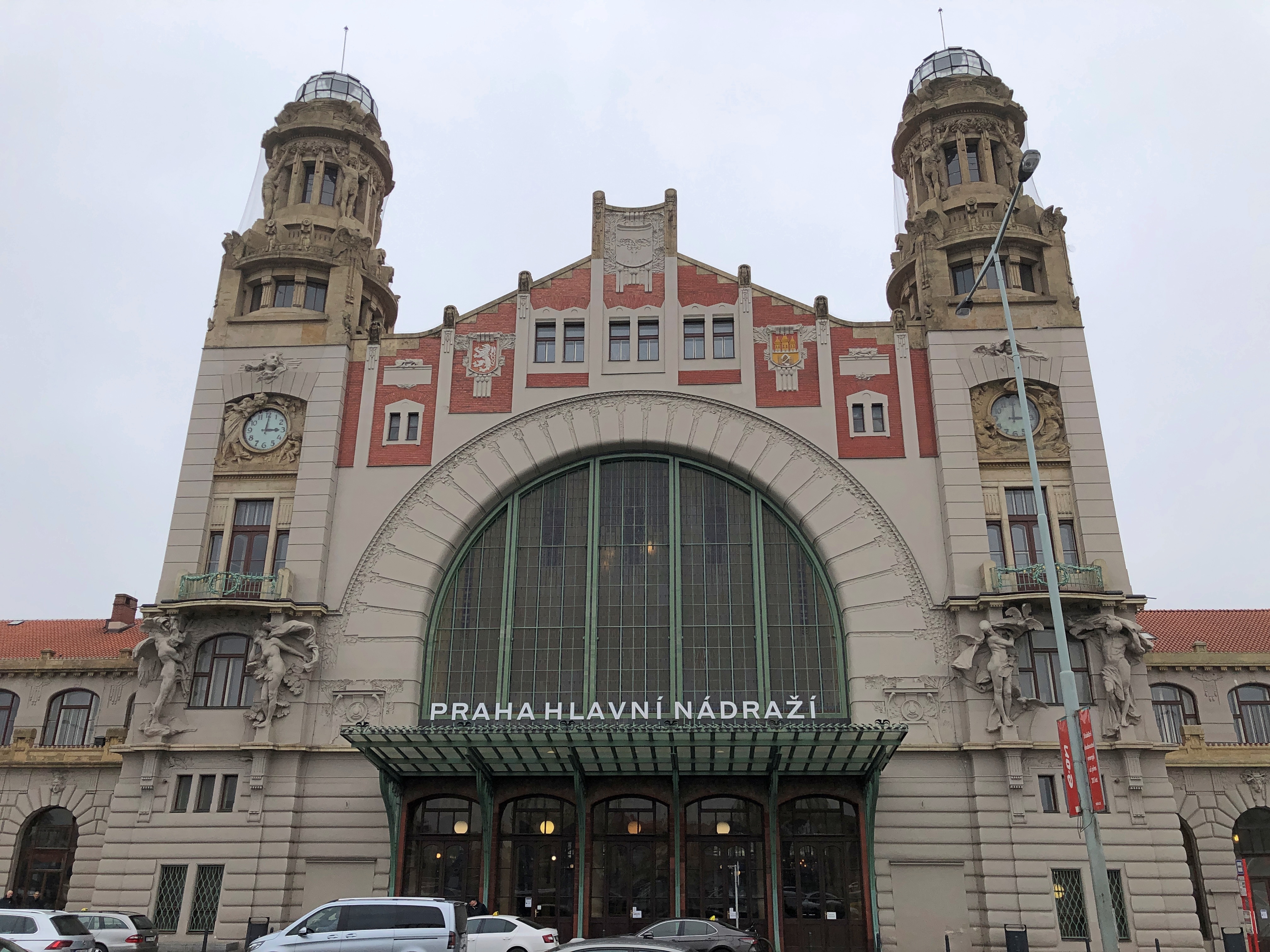
A grand edifice. “One of the final glories of the dying empire,” notes the 2002 Rough Guide to the Czech & Slovak Republics, though perhaps “ramshackle empire” might have been more apt, since who knew the catastrophe of WWI would play out quite the way it did.
“It was designed by Joseph Fanta and officially opened in 1909 as the Franz Josef Station,” the guide book continues. “Arriving in the subterranean modern section, it’s easy to miss the station’s surviving Art Nouveau parts. The original entrance on the Wilsonova still exudes imperial confidence, with its wrought iron canopy and naked figurines clinging to the sides of the towers.”
The grand hall interior is grand indeed.

But largely empty. The crowds were at the more modern lower level, where a long tunnel connects all the train platforms, ticket offices and a fair amount of retail. We boarded our train without any problem and found that our car was nearly empty too. Not many people were headed for Berlin that Wednesday evening.
At one of the suburban stations, however, a young man and young woman got on and sat across the aisle in our car. They had that contemporary Euro-look: casually dressed, visible tattoos here and there, a few studs and earrings for both, and the mandatory beard for the man. They were in a merry mood. Not obnoxiously loud, but making happy-sounding conversations in what I assume was Czech, complete with the universal language of giggling; clearly a couple headed somewhere for some fun. Someone’s wedding, or maybe just a few days off work.
None of that was unusual. Then the woman removed a small air cylinder from her backpack and started using it to blow up balloons, which she and the man proceeded to swat around the car. I’ve been on a lot of trains in a lot of places, but I have to say, that was a first.
That didn’t last long. Soon they got off the train at the last station before the border with Germany, Ústí nad Labem, and the car got quiet again. I hope they continued to have a good time in that town.
On the trip down to Prague on the 10th, in a mostly full car, we had passed the same way going the opposite direction, and it was still daytime. So we got a good look at the hilly territory of the Elbe River Valley south of Dresden, where the train mostly follows the river. A picturesque spot, even in winter.
As for the German-Czech frontier, crossing was perfunctory. Hardly worth calling it a border. No officious or menacing border guards roamed the cars demanding Papers! (Reisepass?) Not in the 21st-century Schengen Area. We were on an Evening Train to Berlin, not a Night Train to Munich. The only indication of entering a new country (either way) was that after crossing each time, our tickets were checked again, electronically, by fairly laid-back workers of the respective railway companies on either side of the line.
The 175-mile trip to Prague began and ended at the Berlin Hauptbahnhof, a massive station that didn’t exist the first time I went to Berlin. A predecessor station on the site had been badly damaged during the war, and the new station wasn’t developed until the 2000s, as Berlin’s fancy new main multi-modal transit center. Besides intercity trains, Berlin S-bahn and U-bahn trains go there, along with a lot of buses. There is also enough retail at the station to qualify as its own mall.
Berlin Hauptbahnhof isn’t an old style, but it is impressive.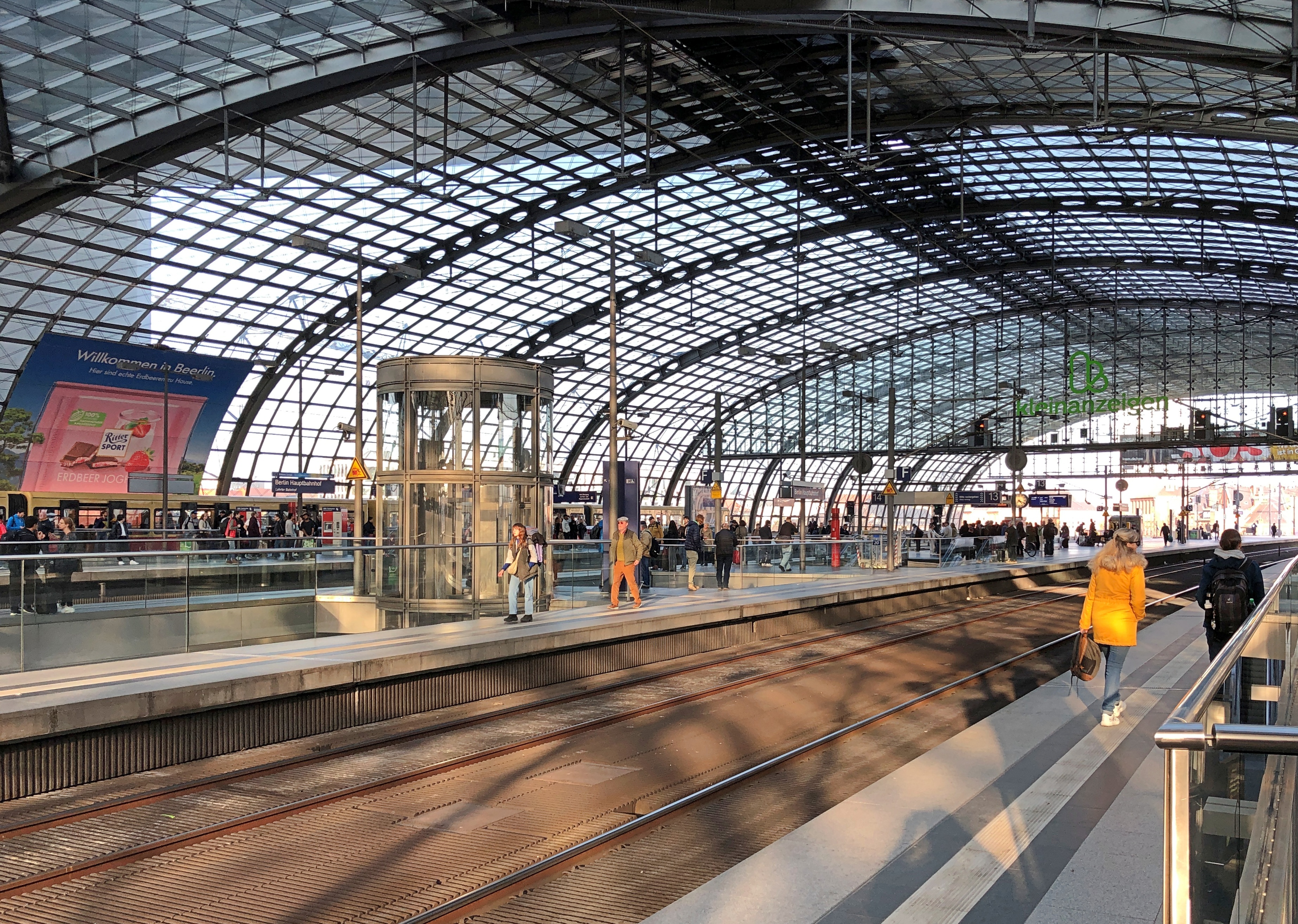


One more impressive rail hub on this trip was a continent away: Tokyo Station, the busiest one in passenger numbers in that urban agglomeration, which is saying something. It too is a multi-modal facility, with various intercity rail lines meeting there, along with subways and buses. The Shinkansen from Osaka goes there, which is how we arrived. The structure dates from 1914 and amazingly survived war in the 1940s – and just as threatening – urban renewal in the 1960s. In more recent years, the station was restored to close to its original design.

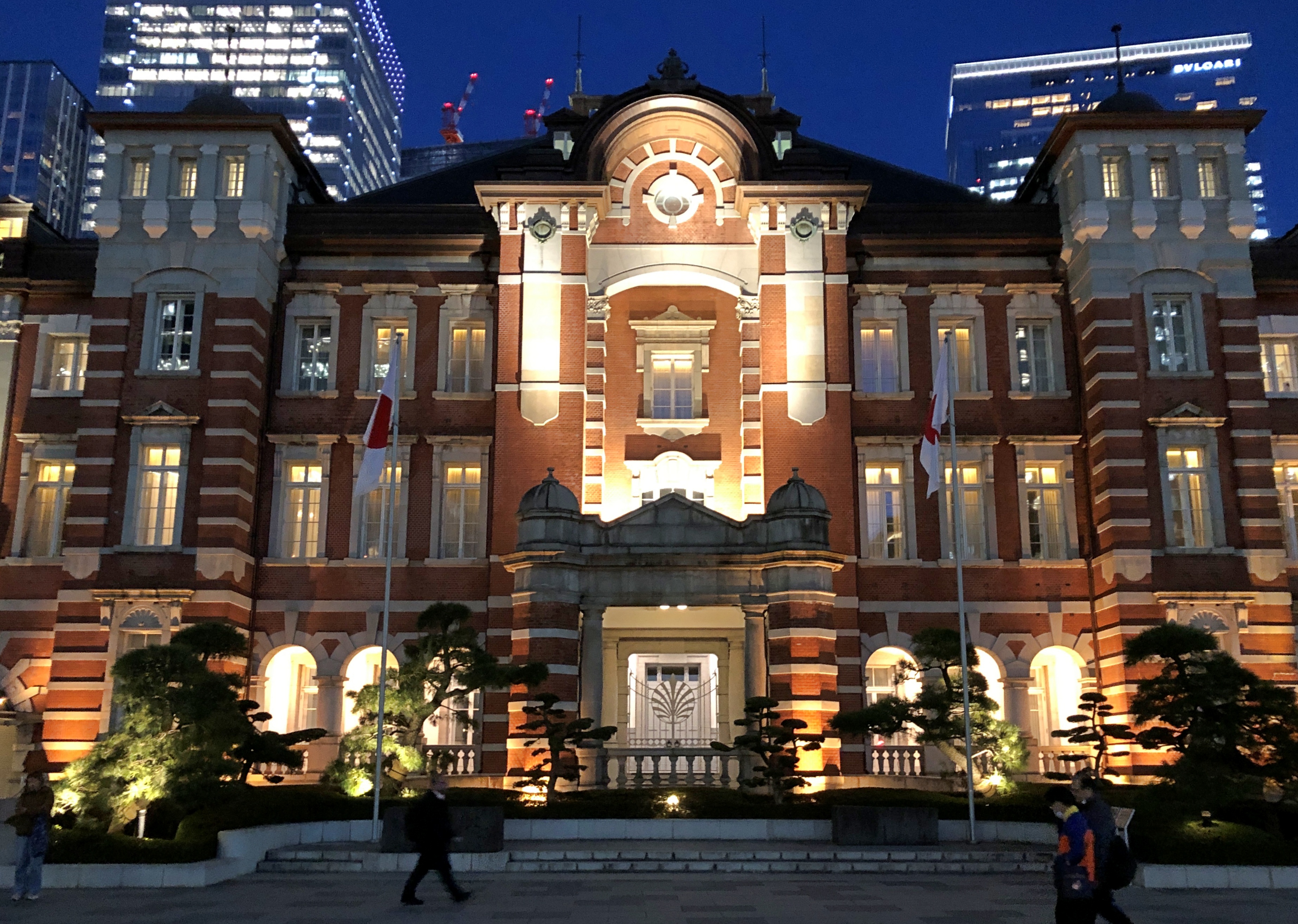
Plenty of retail at Tokyo Station as well. Including some places I’d never seen before. We should have stopped to get something from Tokyo Banana World.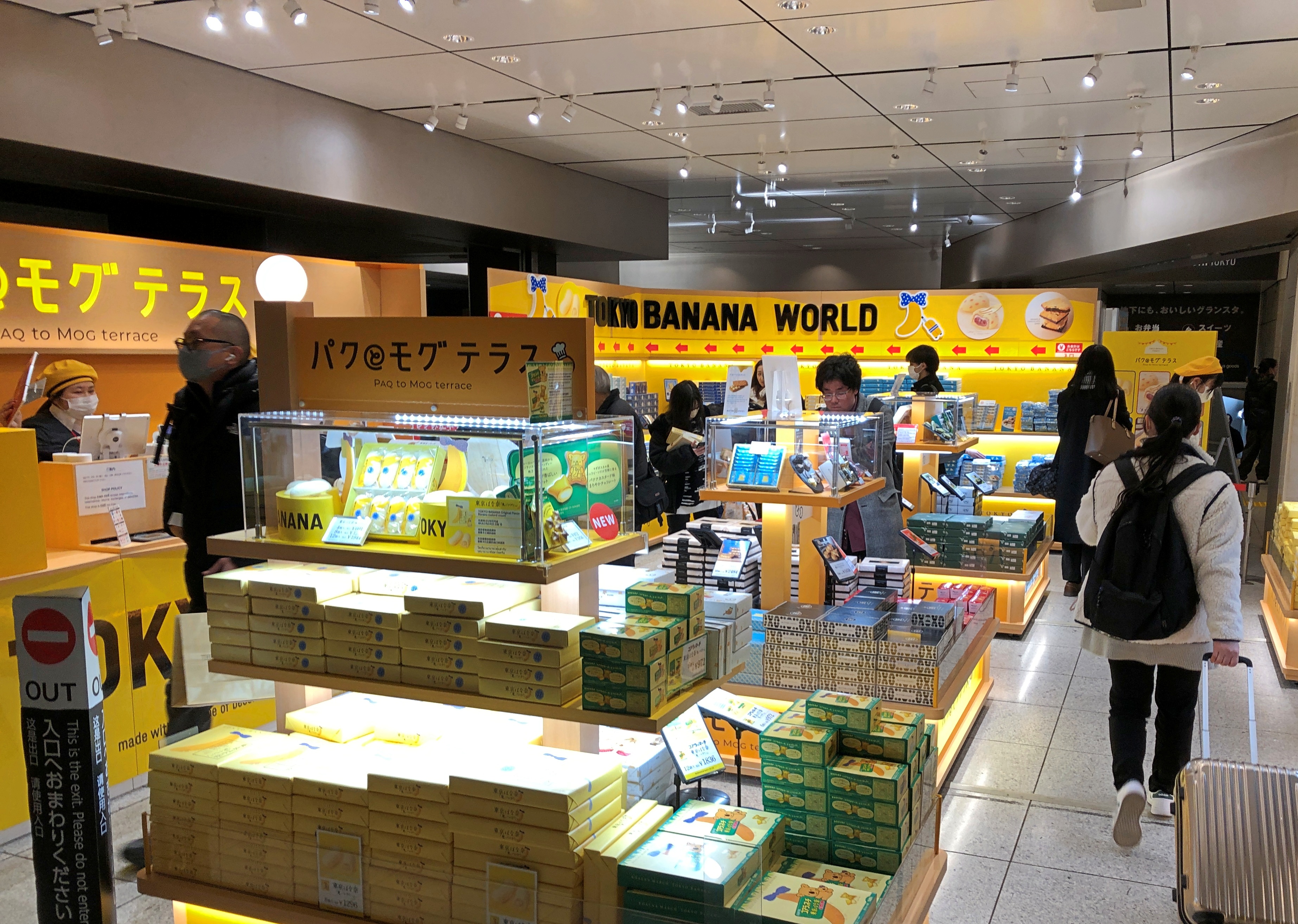
Per Time Out: “Tokyo Banana opened its flagship store called Tokyo Bananas inside Tokyo Station on December 8 [2022], and it’s stocked with exclusive goods. Two of the exclusive products are the Legendary Curry Bread and Cream and Red Bean Paste Doughnut — and yes, banana is the hidden ingredient for both.”
Ex Nippon semper aliquid novi, eh?


